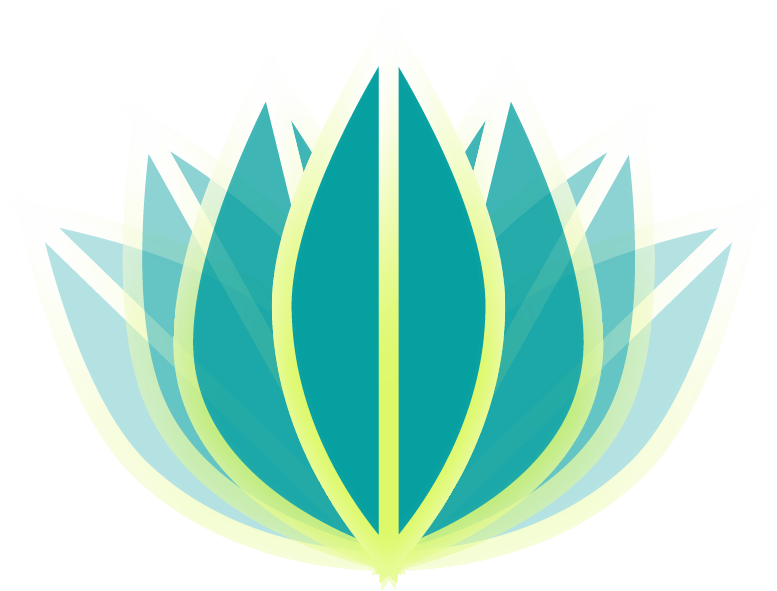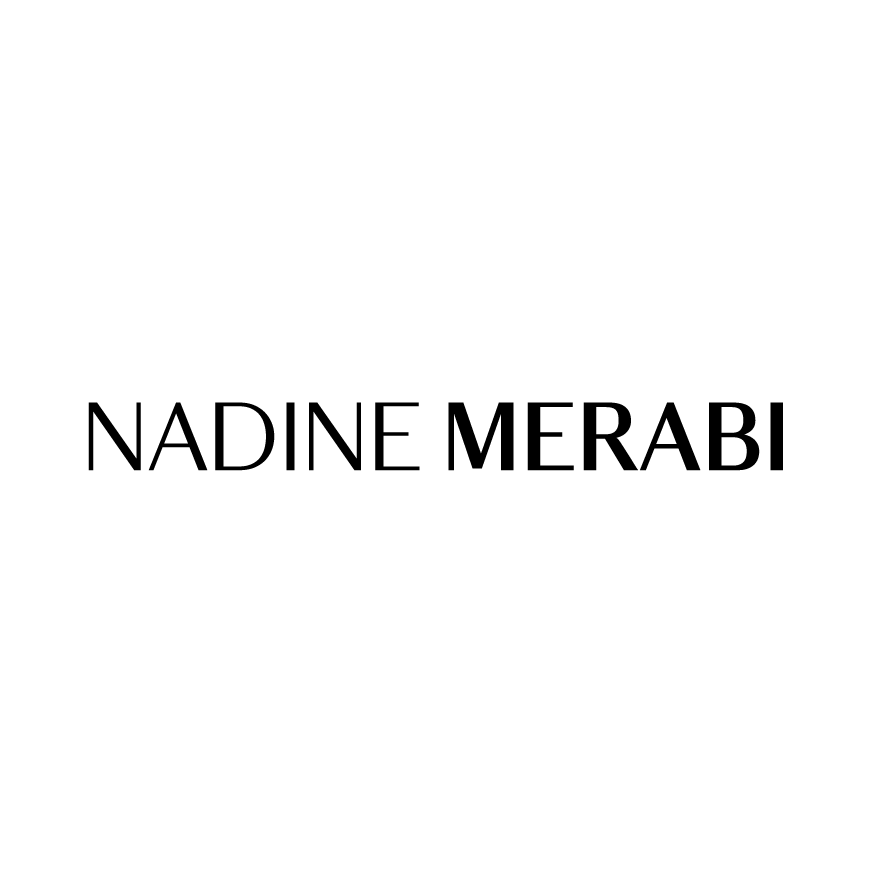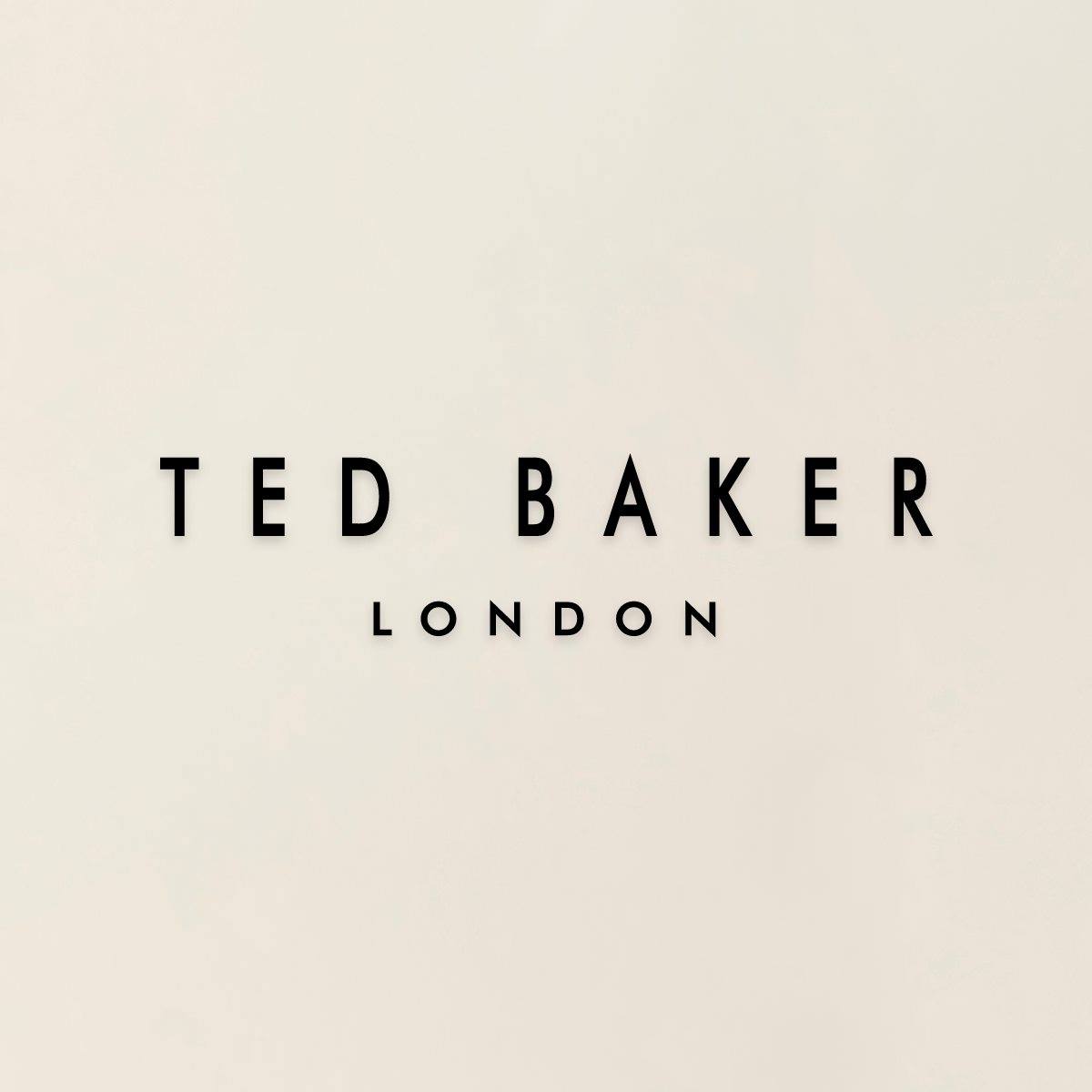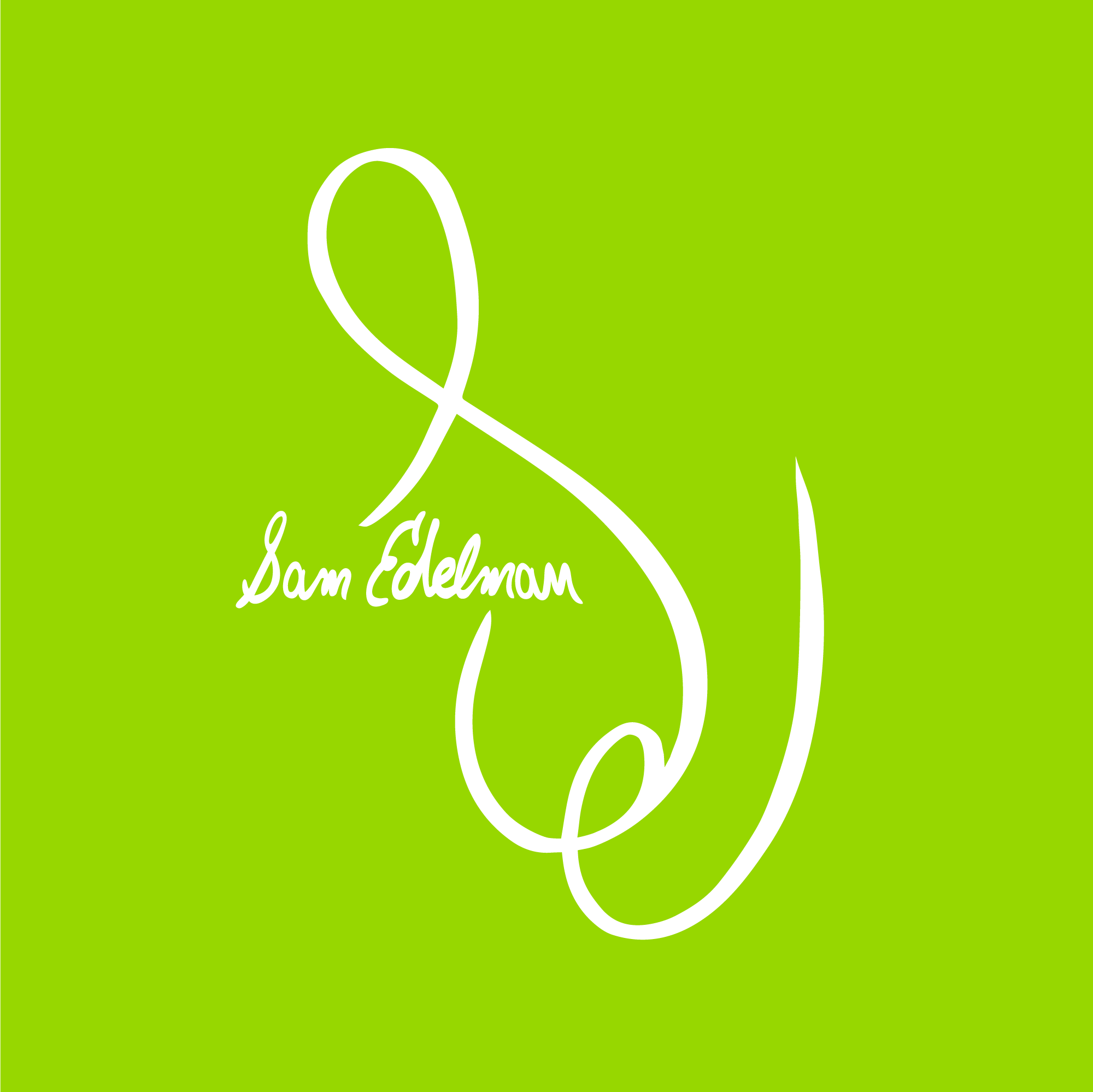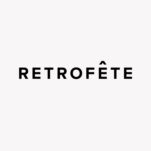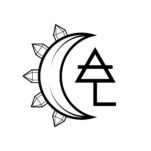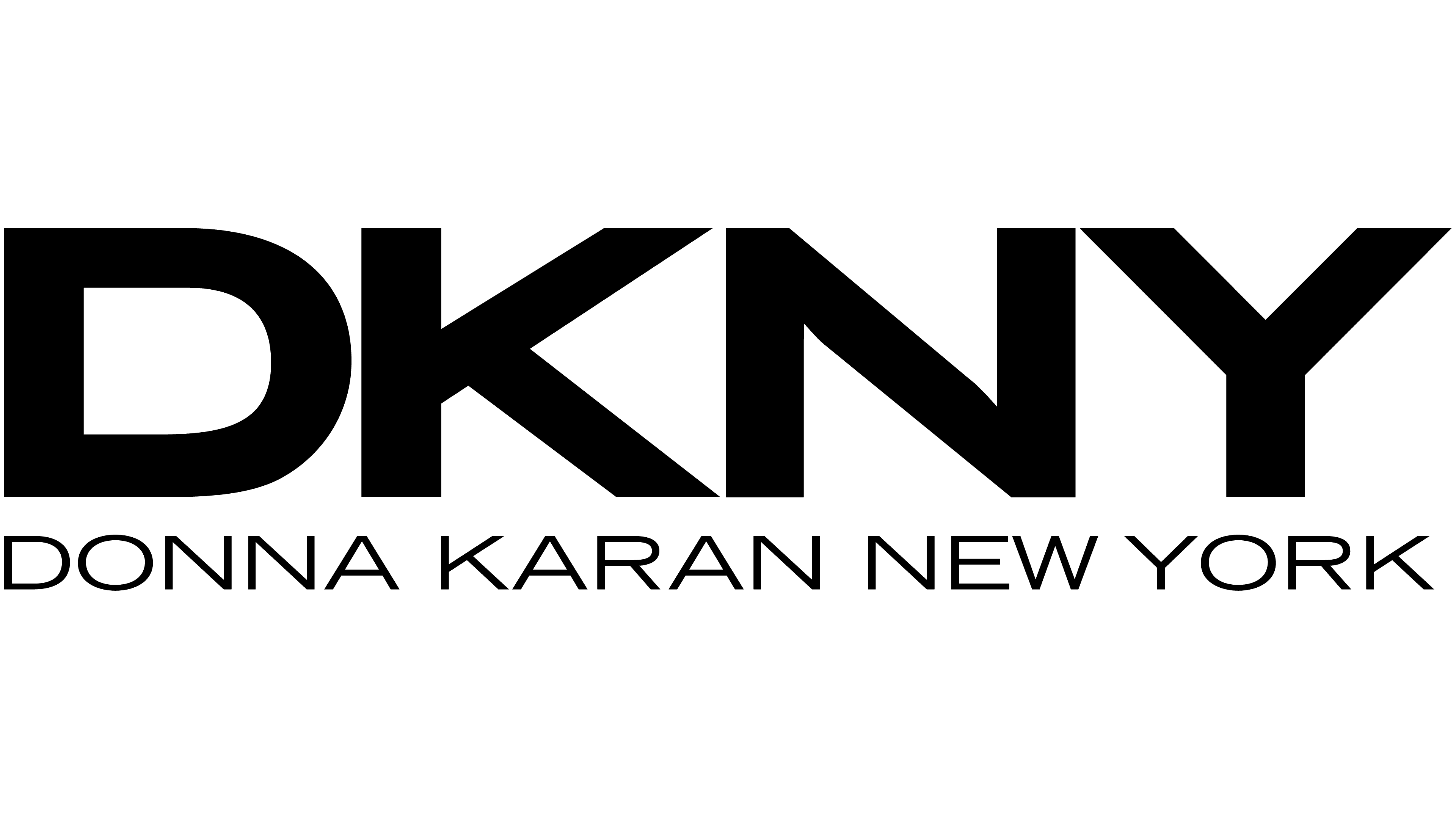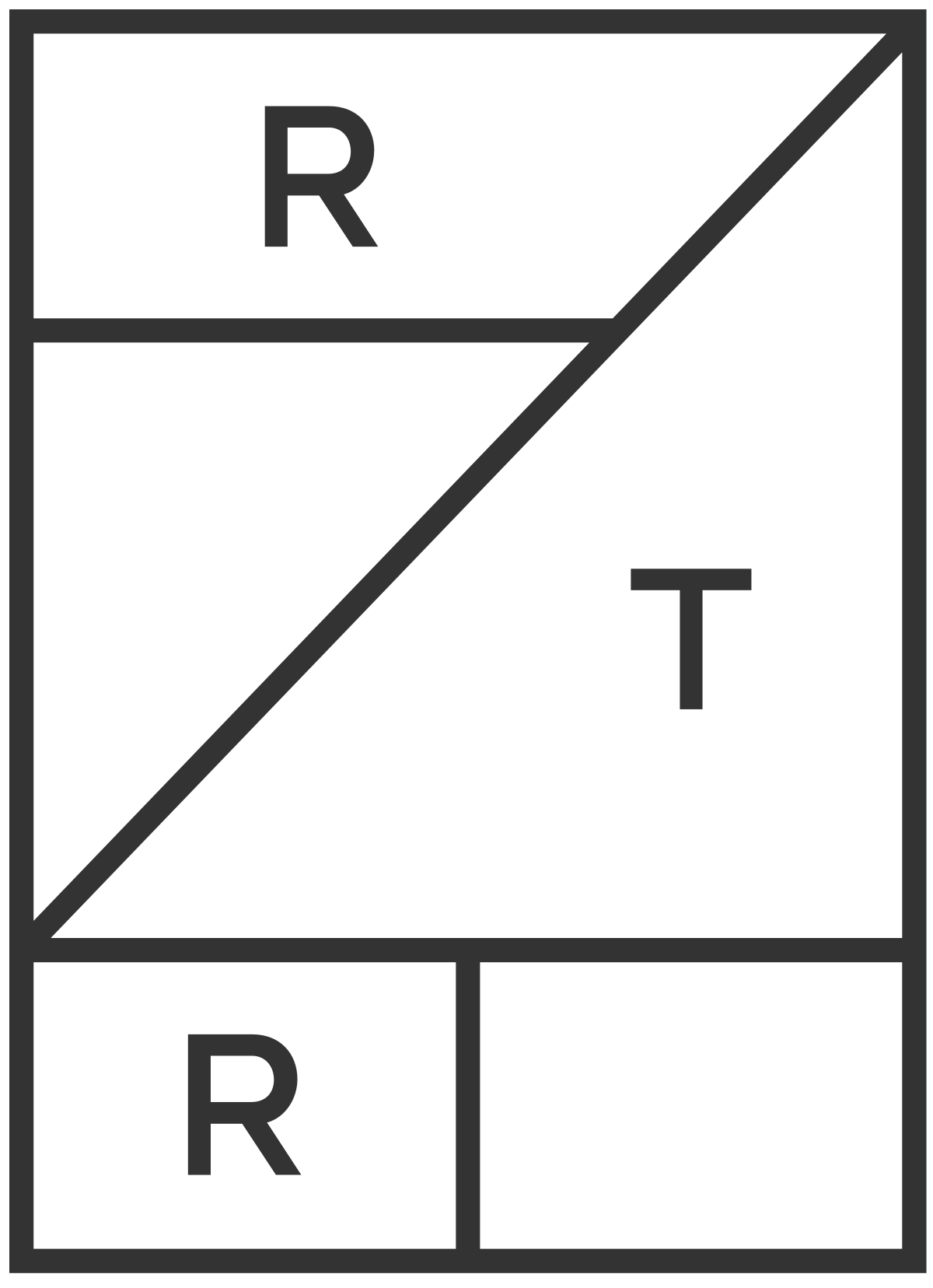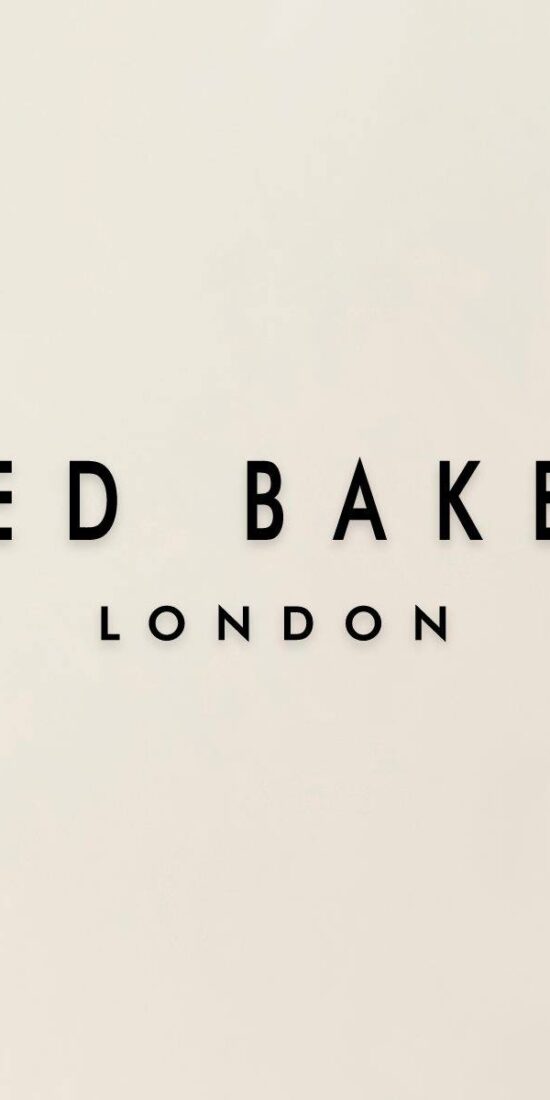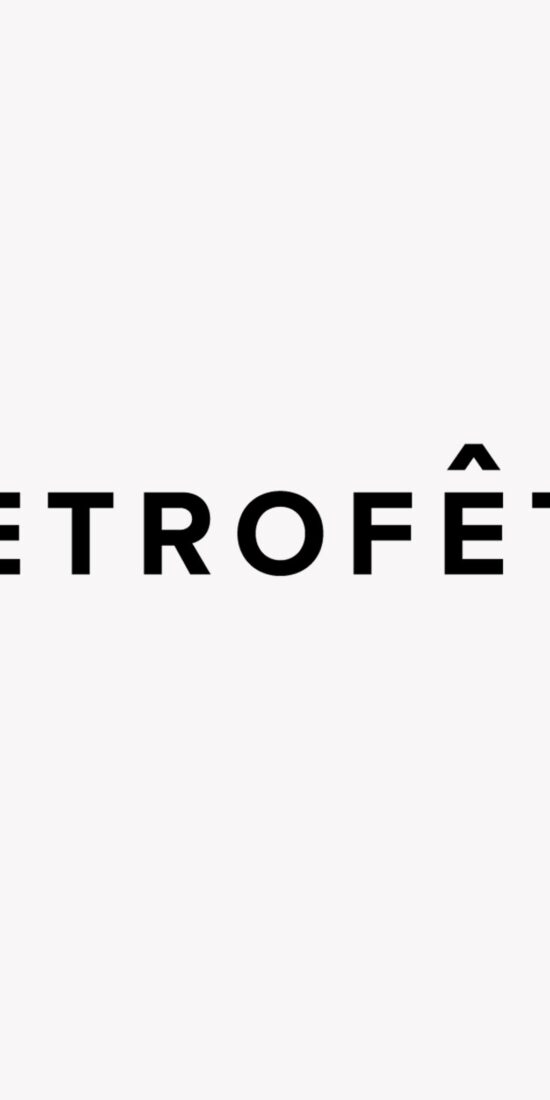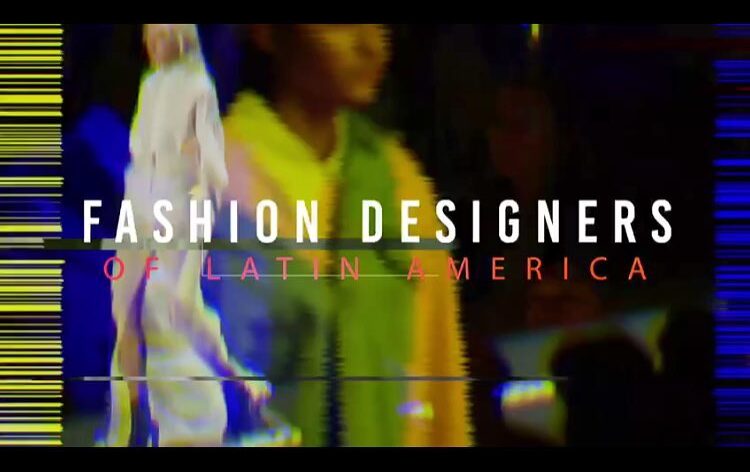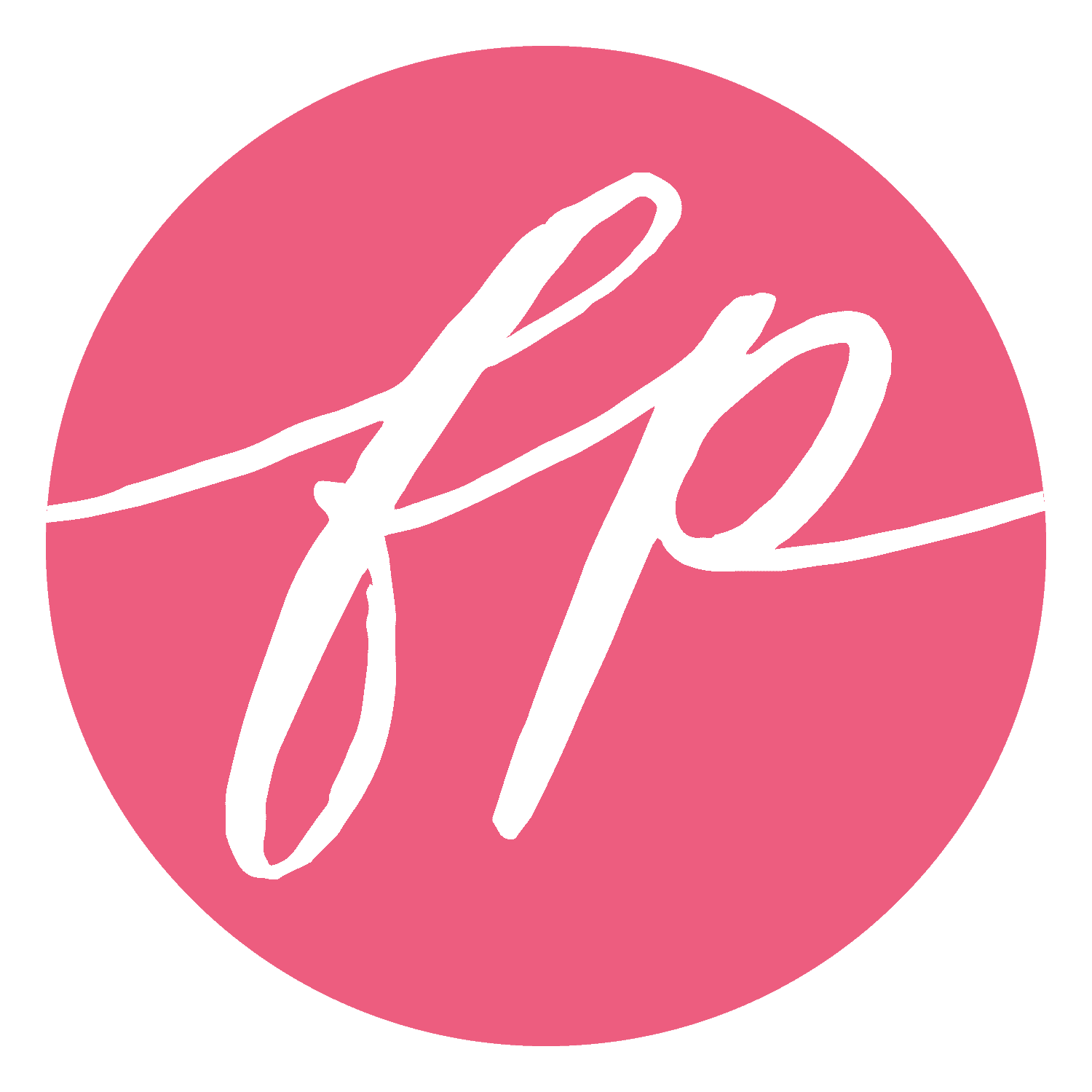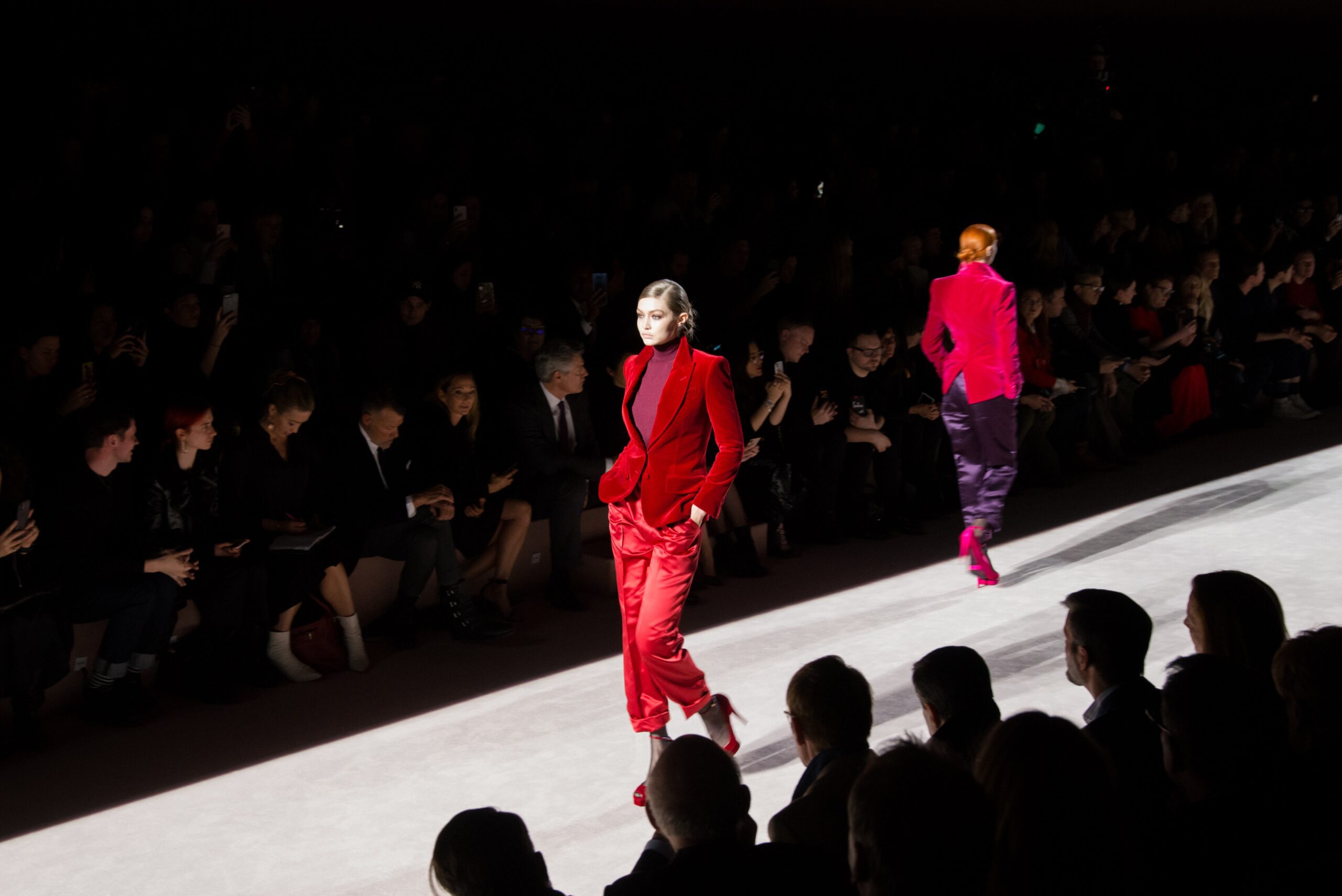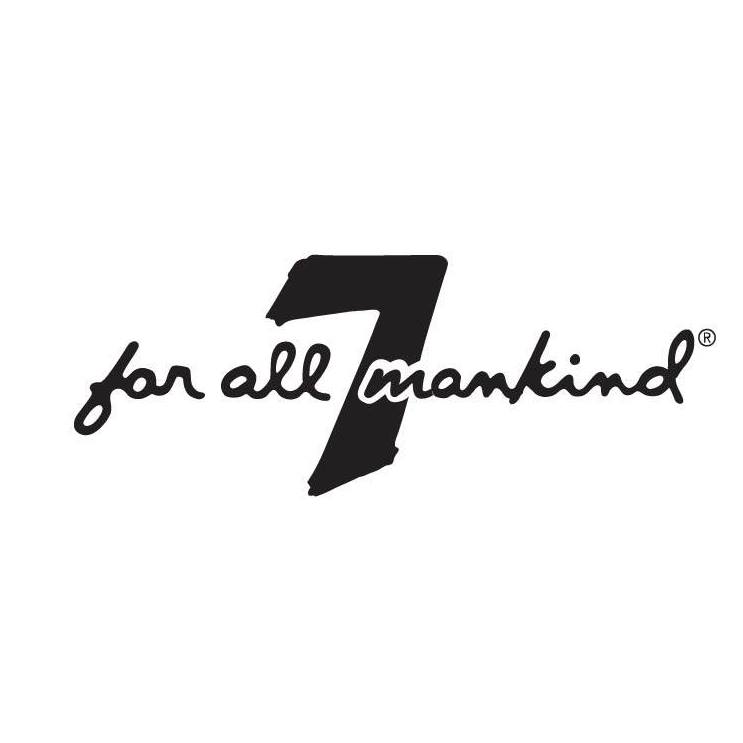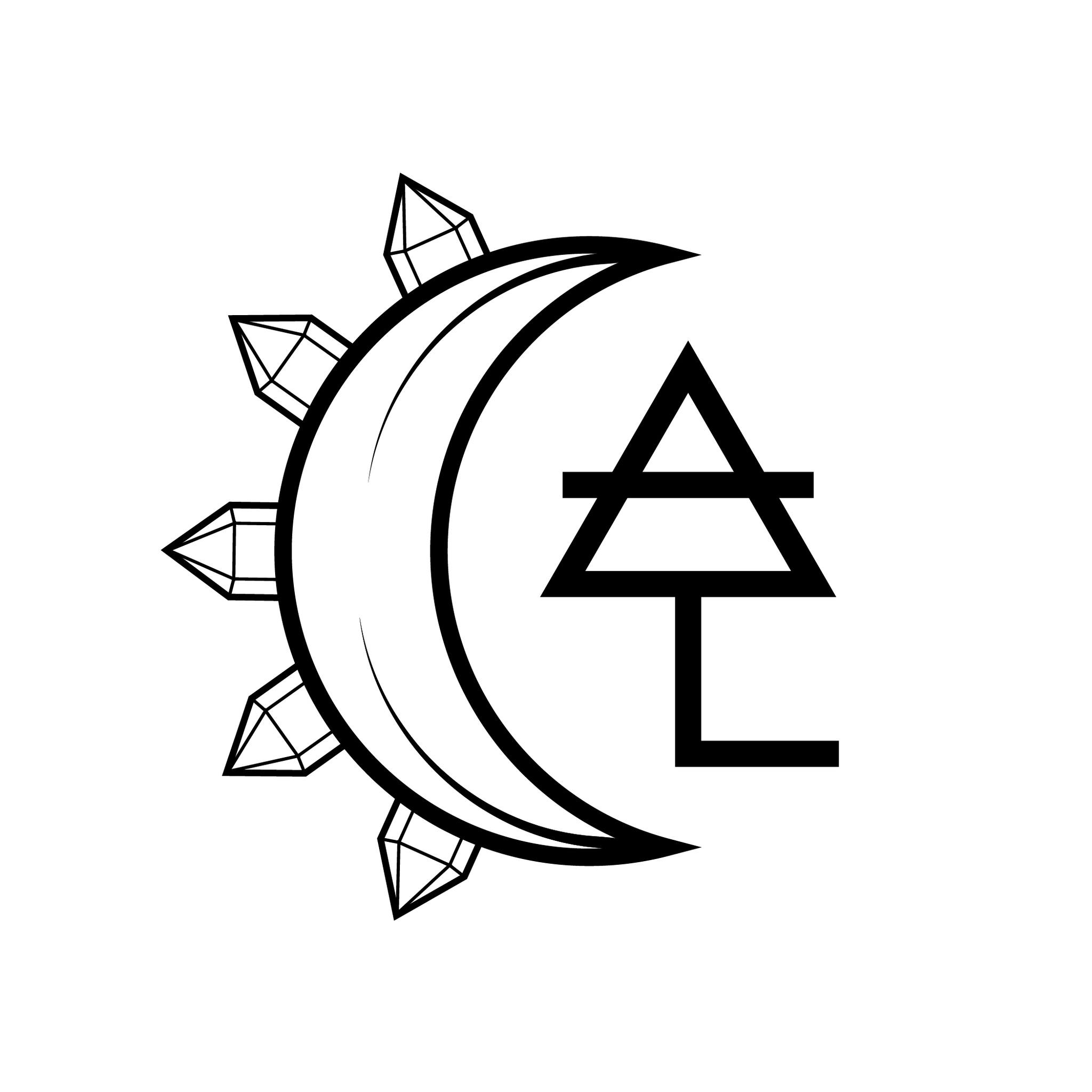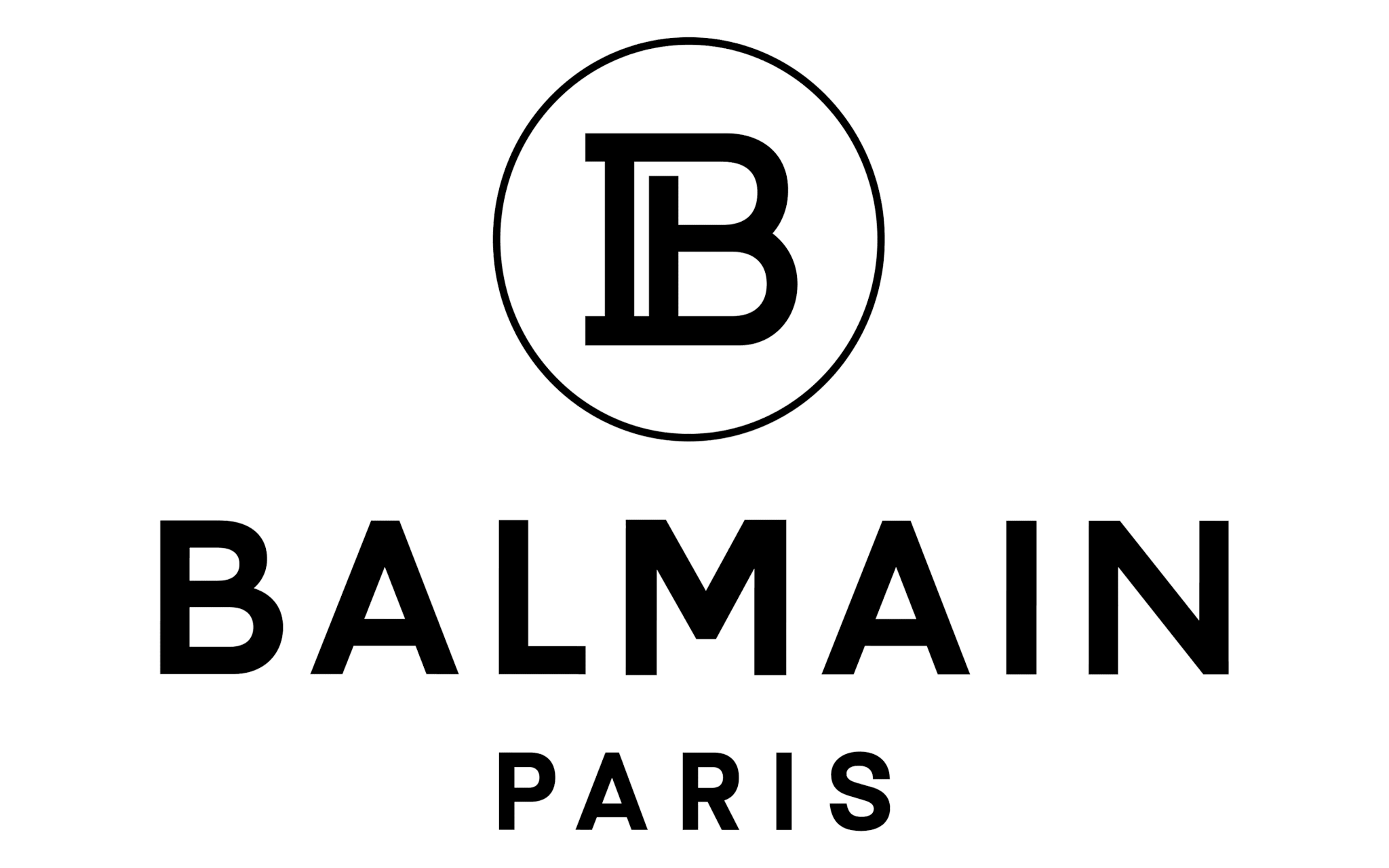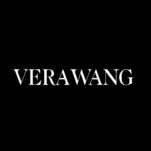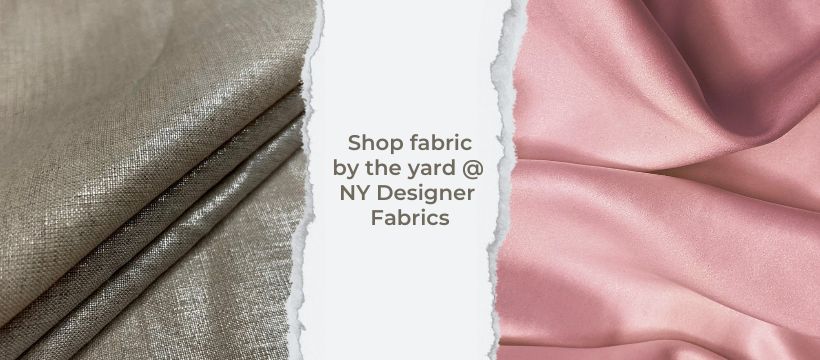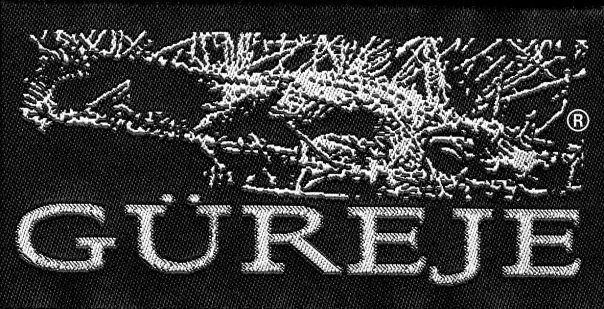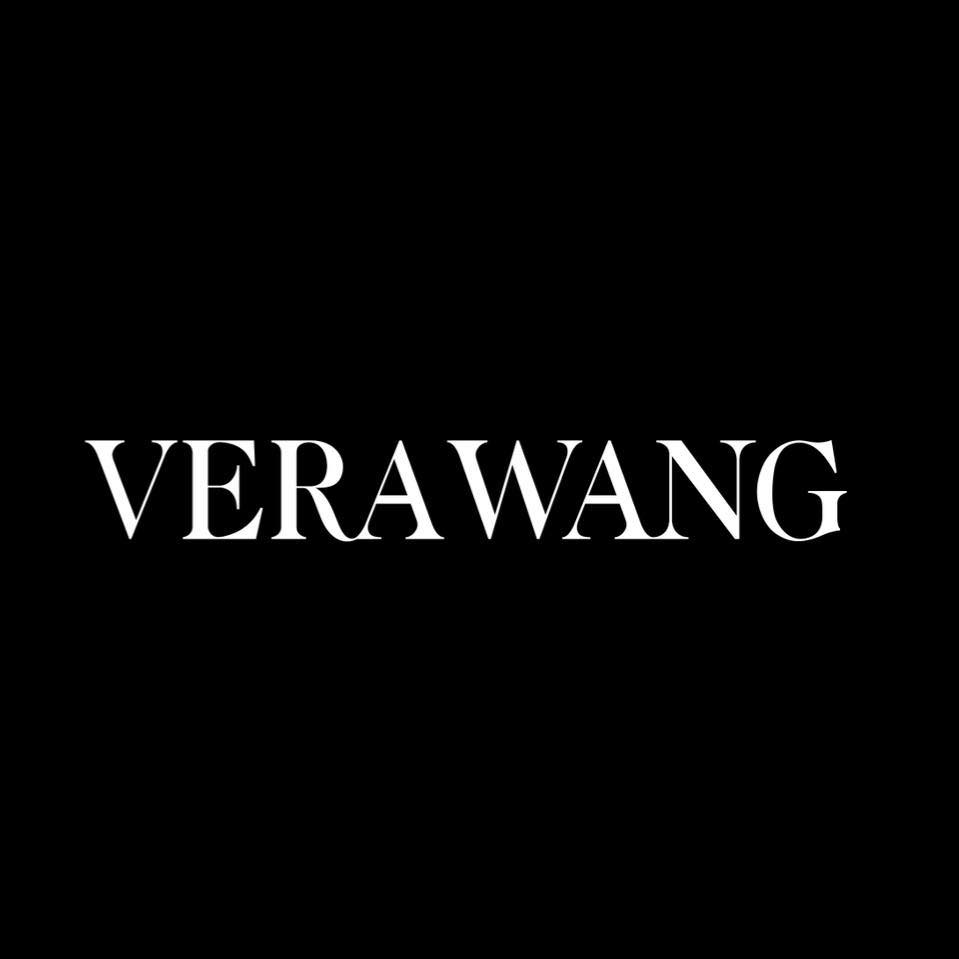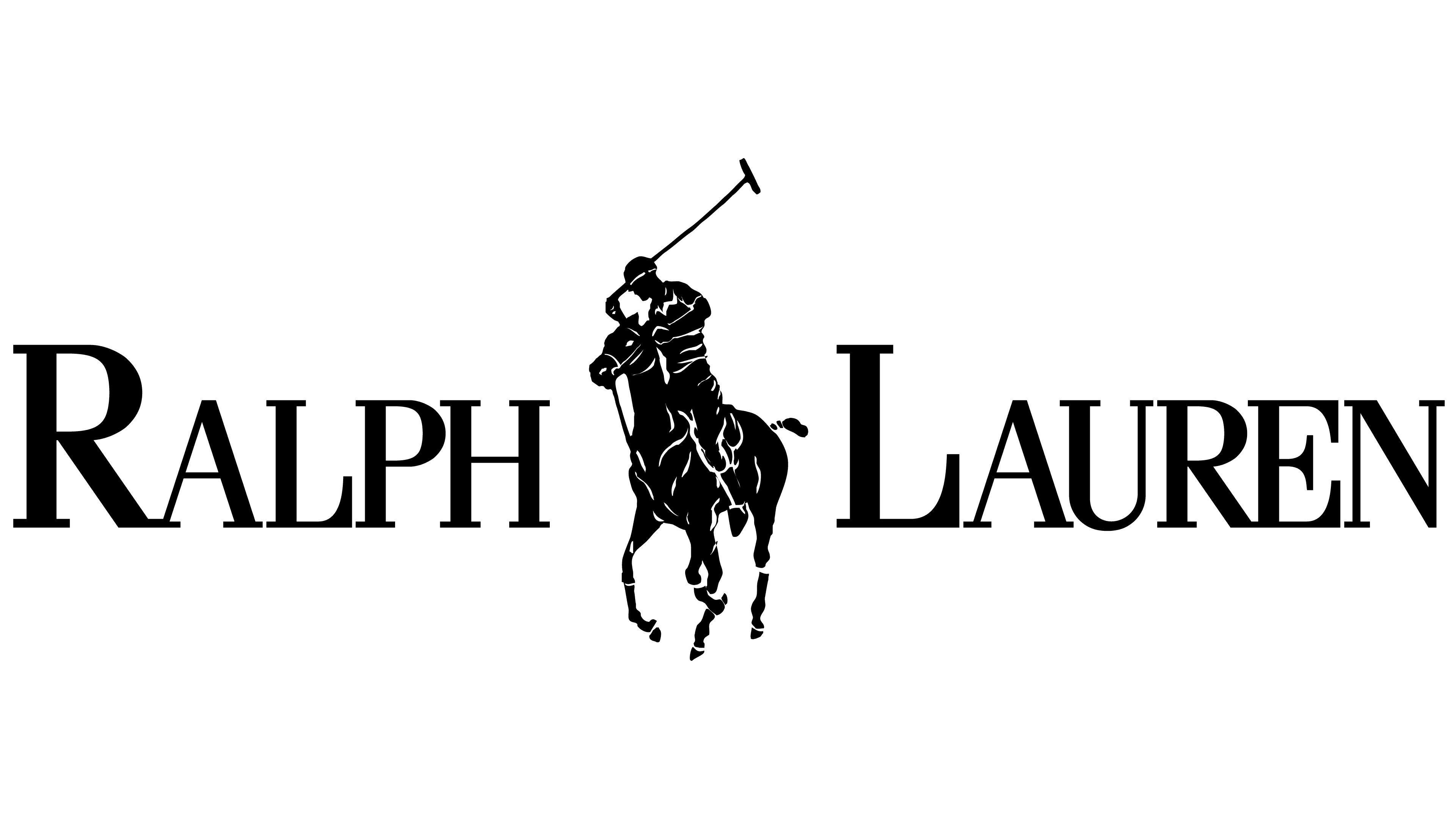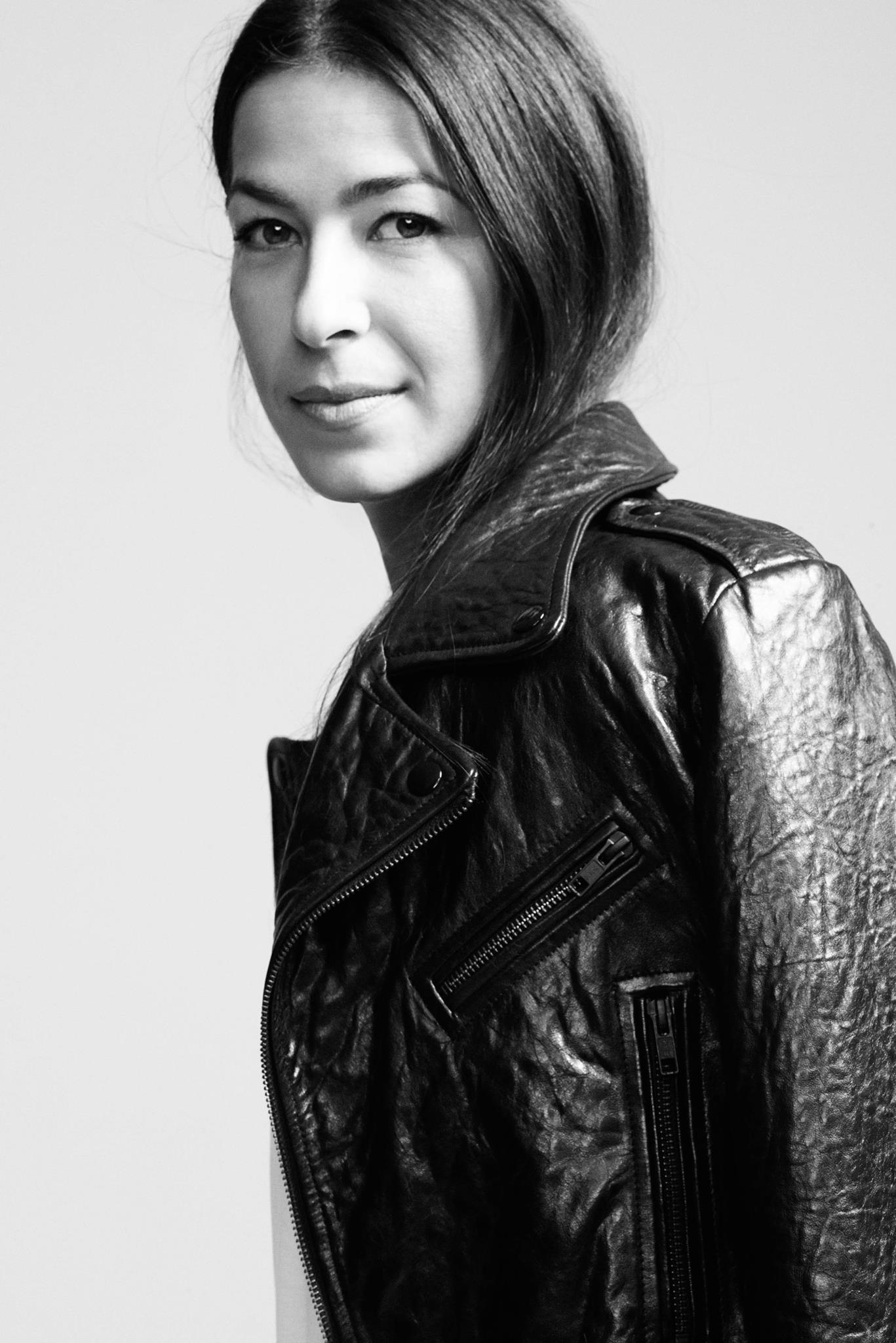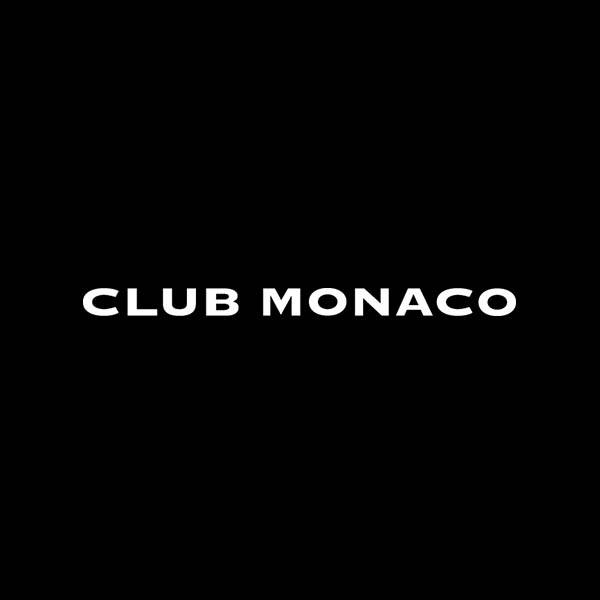New York is the center of fashion in the U.S.A. and offers world-class creative talent, showrooms, retail space and schools.
NYC is home to more headquarters of fashion designers & retailers than any other city in the United States.
For most of the 20th century, every aspect of garment making was located here, from fabric to garment to marketing to the major department stores. The neighborhood in the middle of Manhattan named, The Garment District, (which only takes about 10 New York minutes to walk from end to end) is the reason why NYC became a fashion capital.
New York City offers a number of initiatives to support businesses in the Fashion industry.

blendnewyork began as a contemporary fashion & art boutique.
blendnewyork has been a sponsor of Princeton University's "Fashion Speaks" event for a handful of years. All clothing worn in this video by Princeton's student models were from our boutique, and they all looked so amazing! We loved to see the clothing come to life on the models. All proceeds from these events went to "Autism Speaks," an autism advocacy organization sponsoring autism research and conducting awareness and outreach activities.
Ravella
Discover the origins of Ravella — a name that means "to rebel" in
Ripley Rader
At Ripley Rader, we believe fashion can be chic, comfortable and ethically made.
NADINE MERABI
We are NADINE MERABI. A luxury, ready-to-wear brand making unmistakable pieces to inspire
Steve Madden
Steve Madden is an American fashion designer and businessman. He is the founder
Melinda Maria
You shouldn’t have to spend a lot to get quality jewelry that lasts
Baltic Born Clothing
Meet the sisters Behind Baltic Born Clothing: We started Baltic Born to empower the
Retrofête
A nod to the glamour & exuberance of decades past, the New York-based
Alex Lozier Jewelry
Alex Lozier Jewelry makes magical talismans designed to deepen your connection to Mother
Apparel Kit
Apparel Kit is resetting the standard for the apparel design and development industry. At


New York Fashion Week (NYFW) is 1 of 4 major fashion weeks in the world, collectively known as the “Big 4”, along with Paris, London & Milan.
Held in February and September of each year, and lasting 7–9 days, NYFW is when international collections are shown to buyers, the press, and the general public.
The Council of Fashion Designers of America (CFDA) created the modern notion of a centralized “New York Fashion Week” in 1993, although cities like London were already using their city’s name in conjunction with the words ‘fashion week’ in the 1980s. NYFW is based on a much older series of events called “Press Week”, founded in 1943.
Fashion Industry Terms
FASHION INDUSTRY DICTIONARY
Define A-line.
A style for apparel in which the dress fits at the shoulder, or the skirt at the waist, and gradually flares out to a wider hemline causing it to resemble the letter “A”. This style works well on most figure types- good for disguising bottom-heavy or pear-shaped figures.
History: The term A-Line was first used by the French couture designer Christian Dior to describe the new style of flared skirt introduced in his Spring–Summer 1955 Collection. He had previously used the term H-line to describe his pencil skirts, and this term is still used occasionally. The A-line skirt and dress became very fashionable when Jacqueline Kennedy adopted the style in the early 1960s. The style, with its simplicity, practicality, and elegance, has remained popular since.
Skirts: The A-line skirt is regarded as one of the simplest and most practical skirt styles. It has no visible embellishments for ease, such as pleats or slits, but is fitted to the upper hip by means of seams and/or darts. Its fastening is usually kept discreet, with a side or back zipper. A belt is sometimes used. Pockets may be present, but not usually. The length of an A-line skirt varies, between mini- and below-knee-length.
Dresses and Coats: When referring to dresses and coats, the term A-line generally means fitted from the shoulders to the hips and then widening to the hem, but it is also sometimes used to mean widening from the shoulders to the hem, ignoring the waist and hips. It is often used to describe a popular style of wedding dress, which is fitted above and around the hips but flares gently to the hem, giving a streamlined and quite slim look.
FASHION INDUSTRY DICTIONARY
Define Acid Wash.
Acid washing is a bleaching process that consists of soaking or dampening the pumice with an oxidizing bleach (sodium hypochlorite). The term acid wash is a misnomer because no acid is used. The same process is also called frosting and ice washing. Each new season brings new names to market for the same bleaching process, but with different degrees of intensity.
Cellulase is an enzyme that is sometimes added to pumice stones and/or bleach, or used separately. The cellulase attacks and weakens cellulosic fiber, first on the fiber surface. Because dyes used in denim are mostly on the surface, the effect is a lightening of color, which gives a worn look. Cellulase also destroys fiber fuzz on fabric. Denim is a very strong fabric to begin with, so carefully controlled cellulase treatment has only minimal effect on durability.
Garment finishing for denim and similar apparel has grown over the past decade from a small, almost cottage-industry, to a major industry with exacting test procedures and standards for quality assurance. This work is not performed by traditional textile finishers, but by companies that specialize in this work, most of which were originally industrial laundering facilities.
FASHION INDUSTRY DICTIONARY
Define Acrylic.
Acrylic is a fine, soft and luxurious fabric with the bulk and hand of wool. Light weight and springy, this fabric is non-allergenic, dries quickly, draws moisture away from the body and is washable. Acrylic does not take even a moderate amount of heat. Modacrylics are used in pile fabrics
FASHION INDUSTRY DICTIONARY
Define Affinity.
Dyestuffs are highly complex organic substances that combine both chemically and physically with an equally complex textile fiber molecule. Thousands of different dyestuffs are used for textiles. None is capable of combining with all textile fibers. Textile fibers are also chemical substances. Some dyes, for example, combine with protein (as in wool) and not with cellulose (as in cotton). When a particular dye is capable of combining with a fiber and can impart color to it, the dye has affinity for that fiber.
FASHION INDUSTRY DICTIONARY
Define Applique.
Cutting shapes from textile fabrics and attaching them to another fabric or garment in order to decorate the base material. The ornamental fabrics are most often sewn to the base fabric, but may also be attached with adhesive. Quilts are frequently made with appliqued patterns. Fabric artists and fashion designers often use this technique.
FASHION INDUSTRY DICTIONARY
Define Bamboo.
Bamboo, a grass species, is one of the fastest growing plants on earth. Silky soft with a cool, refreshing feel, bamboo is breathable and adjusts to your body temperature. It is environmentally friendly, sustainable, grown without pesticides, hypoallergenic, antimicrobial and resists odors. A bamboo forest emits 35% more oxygen than an equivalent stand of trees. Bamboo preserves its antibacterial properties even after continued washing. Bamboo is four times more absorbent than cotton, all of the above making it a “feel good” fabric of choice for the environmentally conscious and for people with sensitive skin or MCS (multiple chemical sensitivities).
FASHION INDUSTRY DICTIONARY
Define Bandeau Top.
(A.K.A. a Tube Top) A woman’s strapless top formed from a band of fabric fitting around the bust.
FASHION INDUSTRY DICTIONARY
Define Batik.
A technique of hand-dyeing fabrics by using wax as a dye repellent to cover parts of a design, dyeing the uncovered fabric with a color or colors, and dissolving the wax in boiling water.
Batik or fabrics with the traditional batik patterns are (particularly) found in Indonesia, Malaysia, Japan, China, Azerbaijan, India, Sri Lanka, Egypt, Nigeria, Senegal, and Singapore.
Wax resist dyeing technique in fabric is an ancient art form. Discoveries show it already existed in Egypt in the 4th century BCE, where it was used to wrap mummies; linen was soaked in wax, and scratched using a sharp tool. In Asia, the technique was practiced in China during the T’ang dynasty (618-907 CE), and in India and Japan during the Nara period (645-794 CE). In Africa it was originally practiced by the Yoruba tribe in Nigeria, Soninke and Wolof in Senegal.
FASHION INDUSTRY DICTIONARY
Define Beautiful.
(adjective)- having beauty; having qualities that give great pleasure or satisfaction to see, hear, think about, etc.; delighting the senses or mind: a beautiful dress; a beautiful speech.
(synonyms)- all these adjectives apply to what excites aesthetic admiration. Beautiful is most comprehensive: a beautiful child; a beautiful painting; a beautiful mathematical proof.
Lovely applies to what inspires emotion rather than intellectual appreciation: “They were lovely, your eyes” (George Seferis). What is pretty is beautiful in a delicate or graceful way: a pretty face; a pretty song; a pretty room.
Handsome stresses poise and dignity of form and proportion: a very large, handsome paneled library. “She is very pretty, but not so extraordinarily handsome” (William Makepeace Thackeray).
Fair emphasizes freshness or purity: “In the highlands, in the country places,/Where the old plain men have rosy faces,/And the young fair maidens/Quiet eyes” (Robert Louis Stevenson).
FASHION INDUSTRY DICTIONARY
Define Bias.
Bias is the diagonal direction of a woven fabric. Unless woven from stretch yarns, fabrics stretch more in the bias direction than in the length or width. Designers can take advantage of this stretch by manipulating the fabric so that the bias areas fall in ways that cause the designs to fit the body more closely or drape into soft folds. Designer Madeline Vionnet (active 1912 to 1940) was renown for her bias designs.
FASHION INDUSTRY DICTIONARY
Define Blazer.
A blazer is a type of jacket that resembles a suit coat cut more casually — sometimes with flap-less patch pockets and metal buttons. A blazer’s cloth is usually durable (14oz.), because it is an outdoor sports jacket.
Stylistically, blazers often are uniform garments (think airline, school, yachting and rowing clubs). A blazer is generally distinguished from a sports jacket as a more formal garment and tailored from solid color fabrics. Blazers are often made with naval-style metal buttons, reflecting their historic boating club association, but this is not a defining feature.
The sartorial term blazer originated with the red “blazers” of the Lady Margaret Boat Club (1825), the rowing club of St. John’s College, Cambridge. The Lady Margaret club jackets were termed blazers because of the bright red cloth; the term survived the original red coat.
FASHION INDUSTRY DICTIONARY
Define Bolero.
Short jacket no longer than normal waistline, with or without sleeves. Worn open in front over bodice or blouse. Spanish in origin.
FASHION INDUSTRY DICTIONARY
Define Boning.
Used to give a garment support and body contouring. Once actually constructed of whale bone, today’s boning is usually made of plastic strips slipped into sheaths sewn into the garment.
FASHION INDUSTRY DICTIONARY
Define Boucle.
Bouclé is a kind of novelty yarn. It is a yarn with a length of loops of similar size which can range from tiny circlets to large curls. To make bouclé, at least two strands are combined, with the tension on one strand being much looser than the other as it is being plied, with the loose strand forming the loops and the other strand as the anchor. Bouclé can also refer to the fabric made from this type of yarn, especially fabric that maintains the loopy appearance.
FASHION INDUSTRY DICTIONARY
Define Boutique.
A small shop or a small specialty department within a larger store, especially one that sells fashionable clothes and accessories or a special selection of other merchandise.
Any small, exclusive business offering customized service.
FASHION INDUSTRY DICTIONARY
Define Brocade.
Brocade is a class of richly decorative shuttle-woven fabrics, often made in colored silks and with or without gold and silver threads. The name, related to the same root as the word “broccoli,” comes from Italian broccato meaning “embossed cloth,” originally past participle of the verb broccare “to stud, set with nails,” from brocco, “small nail,” from Latin broccus, “projecting, pointed.”
Brocade is typically woven on a draw loom. It is a supplementary weft technique, that is, the ornamental brocading is produced by a supplementary, non-structural, weft in addition to the standard weft that holds the warp threads together. The purpose of this is to give the appearance that the weave actually was embroidered on.
Ornamental features in brocade are emphasized and wrought as additions to the main fabric, sometimes stiffening it, though more frequently producing on its face the effect of low relief. In some, but not all, brocades, these additions present a distinctive appearance on the back of the material where the supplementary weft or floating threads of the brocaded or broached parts hang in loose groups or are clipped away. When the weft is floating on the back, this is known as a continuous brocade; the supplementary weft runs from selvage to selvage. The yarns are cut away in cutwork and broché. Also, a discontinuous brocade is where the supplementary yarn is only woven in the patterned areas.
FASHION INDUSTRY DICTIONARY
Define Burn-Out Printing.
Burn-out prints involve printing with a chemical substance that destroys the fiber in the pattern design print area. Thus, a hole in the fabric results where the chemical made contact with the fabric. Simulated eyelet embroideries are made with a 2-or-3 roller print, where one roller contains the fiber-destroying chemical and the other roller(s) prints a pattern simulating embroidery stitiching.
Another type of burn-out print involves fabrics that are made from blended yarns, core-spun yarns, or fabric mixtures of two or more types of fibers. The burn-out print chemical destroys one fiber (the cellulosic) and leaves the others undamaged. Many unusual and interesting fabrics are created with this method of printing. Such a fabric might be a rayon/polyester blend where each yarn is a 50/50 blend of polyester and rayon. When the burn-out printing is done, the rayon portion disappears (burn-out) leaving the polyester unchanged. The result is a gauze-like print portion of polyester and the unprinted portion of original polyester/rayon blend.
FASHION INDUSTRY DICTIONARY
Define Bustier.
A garment similar to a corset that is like a combination waist cinch and brassiere. It ends at the waist or extends to the hips. Formerly an undergarment that was sometimes called a merry widow, it is now worn as a woman’s top, is usually strapless, and may be made from highly ornamental fabric.
FASHION INDUSTRY DICTIONARY
Define Camisole.
In the 19th century a camisole was a waist length undergarment worn over a corset. Generally it had broad straps, and tied at the upper edge with a drawstring. Often it was trimmed with lace or eyelet embroidery. In modern usage, the term may refer to any undergarment worn over a brassiere and ending at the waist. Blouses or tops that are cut in a style similar to the historic camisole are called camisole tops.
FASHION INDUSTRY DICTIONARY
Define Cap Sleeve.
A cap sleeve is a specific sleeve style found on short sleeve shirts, dresses, and other garments. In fashion, “cap sleeve” is generally a descriptor reserved for women’s blouses and T-shirts, though it refers more to the specific cut or style of garment, indicating that the sleeve is cut and seamed to fit the shoulders correctly. A cap sleeve shirt is usually not as loose about the upper arms as the standard men’s T-shirt. The length of a cap sleeve is also slightly shorter than a standard short-sleeved shirt with the average length being between 1.5 inches (3.8 cm) to about 4 inches (10.2 cm).
Cap sleeve shirts can be casual or formal, such as those worn under a suit blazer. Cap sleeve dresses can also be casual or formal. However, a cap sleeve garment is always short sleeved. A number of shirt styles for women are described as cap sleeve shirts, including T-shirts. Cap sleeve T-shirts are particularly popular amongst young girls and women, especially when the shirt is cut to fit the waistline as well. This style of shirt is generally sold with the descriptor “cap sleeve tee.”
FASHION INDUSTRY DICTIONARY
Define Capri Pants.
Capri pants (also known as capris, long / three-quarter shorts, and clam diggers) are mid-calf pants. Variants end below the knee and calf. Capri pants were introduced by European fashion designer Sonja de Lennart in 1948. The pants’ name derives from the Italian isle of Capri, where they rose to popularity in the late 1950s and early 1960s. The American actress Grace Kelly was among the first movie stars who wore capris on the island.
FASHION INDUSTRY DICTIONARY
Define Chantilly Lace.
Chantilly lace is a handmade bobbin lace named after the city of Chantilly, France, in a tradition dating from the 17th century, though the most famous are silk laces introduced in the 18th century. Though called Chantilly lace, most of the lace bearing this name was actually made in Bayeux in France and Geraardsbergen, now in Belgium.
In the 17th century, the Duchesse de Longueville organized the manufacture of lace at Chantilly. It has been produced from then up until the present day. Owing to the patronage of the duchesse, and the proximity of Chantilly to Paris it became popular. It came into fashion again during the reigns of Louis XV and Louis XVI, and was an especial favorite of Louis XV’s last mistress, Mme du Barry, and of Marie Antoinette. When the French Revolution began in 1789, demand for the lace ceased. The lace-makers were seen as protégés of the royals, and after Mme du Barry and Marie Antoinette were guillotined in 1793, the lace-makers of Chantilly were themselves killed. At this point production ceased. Napoleon I sponsored revivals of Chantilly lace, most especially between the years 1804 and 1815. At this point production was concentrated in Normandy, mainly around the Bayeux area. While it was no longer being made in Chantilly, all of the old techniques and designs were used.
Chantilly lace reached the height of its popularity around 1830 and was revived again in the 1860s, at which point it was made at Bayeux, but also at Geraardsbergen in Belgium. In 1844 a machine was patented that made Valenciennes lace and black silk Chantilly lace that was difficult to distinguish from the handmade lace.
FASHION INDUSTRY DICTIONARY
Define Charmeuse.
Charmeuse is a lightweight fabric woven with a satin weave, where the warp threads cross over three or more of the backing (weft) threads. The front side of the fabric has a satin finish – lustrous and reflective – whereas the back has a dull finish. It can be made of silk or a synthetic lookalike such as polyester. Silk charmeuse is more expensive and delicate but is softer and a better insulator. Polyester charmeuse is cheaper and can often withstand machine washing, but it does not breathe as well as silk. Charmeuse differs from plain satin in that charmeuse is softer and lighter in weight.
The luster and delicate hand make charmeuse suited to lingerie, flowing evening gowns and drapey blouses. Bridal gowns sometime use charmeuse, however, the fabric does not hold a shape well, so it is not used for full, flared skirts; the charmeuse tends to cling and hang against the body. It is best suited to a more fluid, slinky bias cut, and is too fragile and flimsy for more tailored clothing. It is not used in menswear, with the exception of underwear such as charmeuse boxer shorts. It is one of the more challenging fabrics to sew, and not recommended for beginners. The fabric is extremely slippery and difficult to control through the presser foot of a sewing machine. Seams have a tendency to pucker and pull; a smaller stitch length and finer thread can minimize this, though the experience of the sewer will impact the finished result as well. Charmeuse also tends to leave holes and marks where the fabric was pinned, making the manipulation of pattern pieces more challenging. For greater ease of sewing, a sizing product such as Sullivan’s Spray Fabric Stabilizer can be sprayed on before cutting and washed out after the garment is completed. Charmeuse tears easily, especially when wet, so dry-cleaning is recommended.
FASHION INDUSTRY DICTIONARY
Define Chenille.
Chenille, the French word for caterpillar, is typically used to describe a type of fabric. Many fabrics, such as mohair and wool, get their names from the fibers with which they are made. Chenille, however, is named from the unique process by which it is made. First Known Use: circa 1739.
FASHION INDUSTRY DICTIONARY
Define Chiffon.
Chiffon comes from the French word for cloth or rag, however, the term chiffon describes the method that is used in order to create the fabric.It is a lightweight plain-woven sheer fabric that’s commonly made from cotton, silk or a synthetic fiber.
Chiffon has been worn as early as 1902 and continues to be a popular fabric today, especially in wedding and evening wear. It is also a popular fabric used in blouses, ribbons, scarves and lingerie.
Like other crêpe fabrics, chiffon can be difficult to work with because of its light and slippery texture. Due to this delicate nature, chiffon must be hand washed very gently. Always iron chiffon while slightly damp to reduce wrinkles. Dry cleaning is also an option. Since chiffon is a light-weight fabric that frays very easily, bound or French seams must be used to stop the fabric from fraying. Chiffon is smoother and more lustrous than the similar fabric georgette.
FASHION INDUSTRY DICTIONARY
Define Colorfastness.
Colorfastness refers to the property of a dyed or printed textile to resist color loss or fading resulting from laundering, dry cleaning, sunlight, bleach, perspiration, environmental gases, swimming pool chlorine, and various other conditions of use.
Particular dyes may be colorfast to one condition – for example, laundering – and not colorfast to another condition – for example, perspiration. A matte jersey fabric intended for use in dresses that will be dry cleaned only, may be unsuitable for swimwear. It is therefore important for fabric buyers and converters to specify the conditions of use of fabrics being ordered.
Colorfastness to the various conditions of use is governed by the particular dye class, and the fiber to which the dye is being applied.
FASHION INDUSTRY DICTIONARY
Define Corset.
A slim fitting top, usually strapless with stiff boning inside as support and either laced up or with hooks as closures. Corsets are often used as a substitute for a blouse or part of a gown.
FASHION INDUSTRY DICTIONARY
Define Cowl Neck.
A neckline with material falling loosely from shoulder to shoulder forming soft graceful folds. This can hang either in the front or back of a garment, adding a sensuous, glamorous feel to any outfit.
FASHION INDUSTRY DICTIONARY
Define Crew Neck.
A crew neck is a type of shirt or sweater that has a round neckline and no collar, often worn with other layers. The T-shirt crew neck was developed in 1932 as an undergarment that would absorb sweat and prevent shoulder pads of American football players from causing chafing. The U.S. Navy was the first of the U.S. armed forces to adopt the crew-neck T-shirt or “Gob Shirt.”
FASHION INDUSTRY DICTIONARY
Define Damask.
A reversible rich-patterned fabric of cotton, linen, silk, or wool.
Matching Quote:
“Notwithstanding the universal barrenness, and the contiguity of the desert, I never saw an autumnal landscape so beautifully painted as this was. It was like the richest rug imaginable spread over an uneven surface; no damask nor velvet, nor Tyrian dye or stuffs, nor the work of any loom, could ever match it. There was the incredibly bright red of the huckleberry, and the reddish brown of the bayberry, mingled with the bright and living green of small pitch pines, and also the duller green of the bayberry, boxberry, and plum, the yellowish green of the shrub oaks, and the various golden and yellow and fawn-colored tints of the birch and maple and aspen, each making its own figure, and, in the midst, the few yellow sand-slides on the sides of the hills looked like the white floor seen through rents in the rug. Coming from the country as I did, and many autumnal woods I had seen, this was perhaps the most novel and remarkable sight that I saw on the Cape. Probably the brightness of the tints was enhanced by contrast with the sand which surrounded this tract.”
– Henry David Thoreau
FASHION INDUSTRY DICTIONARY
Define Dart.
V-shaped tuck that is sewn into a garment in order to shape the fabric so that the garment fits the rounded parts of the body. Darts are most often found at the bustline, the back shoulder, the waistline, and the hipline.
FASHION INDUSTRY DICTIONARY
Define Deconstruction.
A term used to describe clothing that has been taken apart and put back together in a new unexpected way, or looks unfinished, raw and as though it may be deteriorating.
FASHION INDUSTRY DICTIONARY
Define Dolman Sleeve.
Cut as an extension of the bodice, the dolman sleeve is designed without a socket for the shoulder, creating a deep, wide armhole that reaches from the waist to a narrowed wrist. Also called a batwing sleeve.
FASHION INDUSTRY DICTIONARY
Define Double Breasted.
Having one-half of the front lapped over the other, and usually has a double row of buttons and a single row of buttonholes.
FASHION INDUSTRY DICTIONARY
Define Draping.
The art of creating a dress or garment simply by arranging fabric around a body using the natural fall of the fabric and techniques like pleating, gathering. The most famous drape would be the sari.
FASHION INDUSTRY DICTIONARY
Define Dropped Waist.
A dropped waist is one with a longer bodice section and a shorter skirt. Popularized in the 1920s, these dresses usually have the waist seam about one to two inches below the natural waist indentation. The skirt is normally full, although slender silhouettes are also available. Drop waist designs are available in both casual and evening fabrics. Balances the upper and lower bodies, and adds to the visual impression of height by lengthening the torso.
FASHION INDUSTRY DICTIONARY
Define Ease.
(1) n. In design of a garment, ease refers to fullness incorporated into a design so that it will fit comfortably.
(2) v. Joining a larger section of a garment to a smaller part by very gradually folding or gathering the edge where the pieces will meet until the larger piece is the same size as the smaller piece.
FASHION INDUSTRY DICTIONARY
Define Eco-Fashion.
Eco-fashion is all about choosing clothing manufactured in an environmentally sound way—whether it’s through sustainable materials or biofriendly production—without sacrificing our ideals of style, comfort, and aesthetics. Eco-fashion gives you the opportunity to feel good and look good: fashion-conscious clothing for an eco-conscious lifestyle.
Organic cotton, hemp, soy fiber, and bamboo fiber are fabrics made from plants that are grown without the use of chemicals or pesticides which are harmful to the earth. Organic wool comes from sheep that were not sprayed, injected, or treated in an inhumane manner. On top of these earth-friendly fabrics, some clothing is made from deconstructing vintage pieces and using the fabric to make something new – a form of recycling.
FASHION INDUSTRY DICTIONARY
Define Egyptian Cotton.
Regarded as the finest cotton in the world, with extra long, fine fibers. It is used to make very fine yarns and expensive, high quality fabrics.
FASHION INDUSTRY DICTIONARY
Define Empire Waist.
Location of the waistline just under the bustline. The name of this style comes from the high-waisted styles popular during the reign of the French Emperor Napoleon Bonaparte (1804-1814).
FASHION INDUSTRY DICTIONARY
Define Epaulette.
Any shoulder ornament, usually a button strap; often seen with braiding or other trim.
FASHION INDUSTRY DICTIONARY
Define Espadrille.
Shoe with a canvas upper and rope sole. Originally a slip on shoe, often with long shoelaces that tied around the ankle, today the term is applied to many different styles of shoes with canvas uppers and soles that appear to be made of rope.
FASHION INDUSTRY DICTIONARY
Define Fishtail Train.
This style is fitted around the hips and flares out from the knee to the hemline. The back of the skirt / dress is longer than the front.
FASHION INDUSTRY DICTIONARY
Define Fulling.
Fulling is a permanent finish used on wool fabrics. The process is a carefully controlled scouring or laundering process to induce progressive felting shrinkage in wool fabrics. The resultant fulled fabric is smoother, more compact, and has yarns more tightly embedded than an unfulled fabric. Woolens are frequently heavily fulled. Some woolen cloths, such as melton (used in coats), are so heavily fulled that careful examination is required to distinguish them from true felt. The presence of yarns is the distinguishing factor.
FASHION INDUSTRY DICTIONARY
Define Gathers.
Gathering is a sewing technique for shortening the length of a strip of fabric so that the longer piece can be attached to a shorter piece. It is commonly used in clothing to manage fullness, as when a full sleeve is attached to the arms or cuff of a shirt, or when a skirt is attached to a bodice.
In simple gathering, parallel rows of running stitches are sewn along one edge of the fabric to be gathered. The stitching threads are then pulled or “drawn up” so that the fabric forms small folds along the threads.
Gathering seams once involved tedious hand sewing of basting, which was time-consuming, especially with heavy fabric. However, finer gathers could be achieved. Now, a quick and easy way to make a gather is to use a wide zigzag stitch with a sewing machine. Both the upper and lower thread are pulled long and placed in front of the sewing machine. Then zigzagging is carefully sewed over top of the two threads without catching the threads as it is sewn. At the end the thread is pulled and fabric is then gathered.
FASHION INDUSTRY DICTIONARY
Define Gaucho Pants.
Gauchos are short pants with a long fashion history. They are named after the South American version of the cowboy (gaucho), and originated in the South American pampas, chacos or Patagonian grasslands, found principally in parts of Argentina, Uruguay, Southern Chile and Rio Grande do Sul, the southernmost state of Brazil. These ranchers made up the major part of the population in the 19th century. Their pants reminiscent of modern day gauchos with their loose fit and wide hems.
Gaucho pants are usually made out of a soft cotton, but can also be found in denim or other fabrics. They are higher-waisted, fitted around the hips and flare out as they go down the legs, ending up quite loose around the hems. They are calf length, making them perfect for spring or summer.
Depending on the color and fabric, they can be worn almost anywhere. The loose comfort makes them perfect lounging pants when worn with a tank top or a sweater around the house. If you pair them with a nice top and heels, they can be worn in darker colors for business or going out at night.
FASHION INDUSTRY DICTIONARY
Define Gauntlets.
Gauntlet is a name for several different styles of glove, particularly those with an extended cuff covering part of the forearm. Gauntlets exist in many forms, ranging from flexible fabric and leather gloves, to mail and fully articulated plate armour.
In the clothing industry, gauntlets can refer to a fashion accessory which are just fingerless gloves with an extended cuff and little or no hand covering.
FASHION INDUSTRY DICTIONARY
Define Georgette.
Georgette (shortened from crêpe Georgette or Georgette crêpe) is a sheer, lightweight, dull-finished crêpe fabric named after the early 20th century French modiste, Georgette de la Plante.
Originally made of silk and later of rayon or blends, modern georgette is often made of synthetic filament yarns. Georgette is plain or tabby woven, and like other crêpes is made with highly twisted yarns. Georgette’s characteristic crinkly surface is created by alternating S- and Z-twist yarns in both warp and weft.
Georgette is made in solid colors or prints, and is used for blouses, dresses, evening gowns, and trimmings. It is springier and less lustrous than the closely related chiffon.
FASHION INDUSTRY DICTIONARY
Define Gingham.
Gingham is a medium-weight balanced plain-woven fabric made from dyed cotton or cotton-blend yarn.
The name originates from an adjective in the Malay language, genggang, meaning striped. Some sources say that the name came into English via Dutch.
When originally imported into Europe in the 17th century it was a striped fabric, though now it is distinguished by its checkered pattern. From the mid 18th century, when it was being produced in the mills of Manchester, England, it started to be woven into checked or plaid patterns (often blue and white). Checked gingham became more common over time, though striped gingham was still available in the late Victorian period.
Gingham is made of carded or combed, medium or fine yarns, where the coloring is on the warp yarns and always along the grain (weft). Gingham has no right or wrong side with respect to color. Along with muslin, gingham is often used as a test fabric while designing fashion, or used for making an inexpensive fitting shell prior to making the clothing in fashion fabric.
Dorothy Gale wore a blue gingham dress in the Wizard of Oz book and film. Gingham shirts have been worn by mods since the 1960s and continue to be identified with fans of indie and mod music with brands like Liam Gallagher’s Pretty Green, Ben Sherman, Fred Perry, Rough Trade and Merc producing gingham shirts.
FASHION INDUSTRY DICTIONARY
Define Haute Couture.
High fashion, hand made, staggeringly expensive one of a kind pieces that often require three fittings. To qualify as an haute couture piece, a garment must follow several strict guidelines. For a label or business to qualify as a couture house, it must belong to the Syndical Chamber for Haute Couture in Paris.
The fashion designer collections seen at certain Fashion Week events are considered to be Haute Couture. Haute couture is not only made-to-order for a specific customer, it is usually made from high-quality, expensive fabric and sewn with extreme attention to detail and finish, often using time-consuming hand-executed techniques.
In France, designation by the term haute couture is protected by law. A certain number of formal criteria (number of employees, participation in fashion shows…) must be met for a fashion house to use the label; a list of eligible houses is made official every year by the French Ministry of Industry. The haute couture houses belong to the professional union, the Chambre Syndicale de la Haute Couture.
FASHION INDUSTRY DICTIONARY
Define Hemp.
One of the oldest, cultured plants of mankind, hemp was labeled as grungy and alternative looking in the past. Today, it is considered first-class, non-toxic, breathable basic wear. It is naturally resistant to mold and most pests, eliminating the use of pesticides and herbicides. Extremely durable and versatile, hemp is cool in the summer and warm in the winter. Hemp has eight times the tensile strength and four times the durability of cotton. It is antistatic, dust-free, anti-fungal, anti-bacterial and resistant against moths and dust mites. Hemp has a natural brightness preventing the need to use chlorine bleach. It is a fabric of choice for people with sensitive skin. An additional quality of hemp is that it provides natural sun protection, shielding 96% of UV-rays.
FASHION INDUSTRY DICTIONARY
Define Hems.
The lower edge of a part of a garment that has been finished off with some type of sewing to cover the raw edge. Among the more common types of hems are: plain hem that is turned up and sewn into place; rolled hem used on sheer or delicate fabrics and rolled up by hand into a narrow hem that is sewn with small hand stitches; and faced hem, which is finished with a piece of fabric sewn to the bottom of the garment edge and then turned up to the underside and sewn into place.
FASHION INDUSTRY DICTIONARY
Define Herringbone.
A variation on the twill weave construction in which the twill is reversed, or broken, at regular intervals, producing a zig-zag effect.
FASHION INDUSTRY DICTIONARY
Define Houndstooth.
A large checked pattern with notched corners suggestive of a canine tooth, typically used in cloth for jackets and suits.
FASHION INDUSTRY DICTIONARY
Define Interlock.
The stitch variation of the rib stitch, which resembles two separate 1×1 ribbed fabrics that are interknitted. Plain (double-knit) interlock stitch fabrics are thicker, heavier, and more stable than single knit constructions.
FASHION INDUSTRY DICTIONARY
Define Jacquard.
A design which contains very detailed, intricate motifs. The patterns are woven on a jacquard loom by controlling each warp thread separately.
Joseph Marie Jacquard (1752-1834) was the French inventor of the jacquard loom (1801). It was the first automatic loom able to weave complex patterns. He recognized that although weaving was intricate, it was repetitive, and saw that a mechanism could be developed for the production of sophisticated patterns just as it had been done for the production of simple patterns.
FASHION INDUSTRY DICTIONARY
Define Jersey.
The consistent interloping of yarns in the jersey stitch to produce a fabric with a smooth flat face, and a more textured, but uniform back. Jersey fabrics are produced on circular knitting machines.
FASHION INDUSTRY DICTIONARY
Define Jewel Neck.
A high round neckline resting simply at the base of the neck.
FASHION INDUSTRY DICTIONARY
Define Kaftan Dresses.
1. A full-length garment with elbow-length or long sleeves, worn chiefly in eastern Mediterranean countries.
2. A westernized version of this garment consisting of a loose, usually brightly colored waist-length or ankle-length tunic.
FASHION INDUSTRY DICTIONARY
Define Kangaroo Pocket.
A pocket formed by sewing a piece of cloth over the garment leaving two open ends. Usually on sweatshirts or other casual attire, an oversized front pocket, which can also be used as a hand warmer.
FASHION INDUSTRY DICTIONARY
Define Keyhole Neck.
A smaller decorative opening that resembles a keyhole below the neckline. A tear shaped or round cutout that fastens at the front or back neckline.
FASHION INDUSTRY DICTIONARY
Define Kimono.
Garment typical of Japanese costume, made as loose, wide-sleeved robe, fastened around the waist with a broad sash.
FASHION INDUSTRY DICTIONARY
Define Lace.
Lace is an openwork fabric, patterned with open holes in the work, made by machine or by hand. The holes can be formed via removal of threads or cloth from a previously woven fabric, but more often open spaces are created as part of the lace fabric. Lace-making is an ancient craft.
True lace was not made until the late 15th and early 16th centuries. A true lace is created when a thread is looped, twisted or braided to other threads independently from a backing fabric. Originally linen, silk, gold, or silver threads were used. Now lace is often made with cotton thread, although linen and silk threads are still available.
FASHION INDUSTRY DICTIONARY
Define Laundering.
Laundering, the most common method of renovation for washable textile products, uses water combined with cleansers, such as soaps or detergents, and other additions, such as bleaches, for soil removal.
The effects of laundering and the degree of cleaning obtainable depend on the cleanser and auxiliary agents used (e.g., bleaches, other additives0, the water quality, the temperature, the material being cleaned, and the water-to-weight-of-fabric ratio in the machine or laundry tub. Separating of colors to prevent color fading and laundering at optimum temperatures for both cleansing and to prevent shrinkage, dye and fiber damage are important considerations in laundering. Care labels permanently attached to garments should be followed carefully to avoid laundry problems.
The fiber content of the garment being laundered is important. Some hydrophobic fibers (e.g., polyester) are not only water hating but are also oil loving (that is, oleophilic). Therefore, water-borne soil such as coffee, fruit sugar, and chocolate are initially partially repelled by the fiber. This soil can be removed by laundering action when the fiber has become thoroughly wetted. (This requires extra tumbling or soaking due to the low absorbency of the fiber.) The oil-borne soils in hydrophobic fibers, however, are more difficult to remove. Soils such as gravy, mayonnaise, and motor oil are absorbed and held tenaciously by the fiber because of their oleophilic character. Removal by laundering is often ineffective, and dry cleaning must be used. However, soil-release finishes for polyester assist in removal of oil-borne soils. (It must be noted that most of these finishes becomes less and less effective with each succeeding wash, and are completely eliminated by the eighth to tenth laundering.)
FASHION INDUSTRY DICTIONARY
Define Linen.
Linen is one of the oldest and most luxurious of textiles. Favored by ancient Egyptians, who used it as wrappings for royal burials, linen has a history thousands of years old. Linen is used to make clothing, luxury bed dressings, table settings and even as a high-end upholstery fabric.
Linen is, by definition, a fabric woven out of natural fibers taken from the stalk of the flax plant.
Strength
Linen is considered to be up to three times stronger than other natural fibers such as cotton, and this is due in part to the fact that the fibers used to make linen are extremely long: up to 50 inches.
Characteristics
Linen is expensive to make, but it is very absorbent and is a good conductor, keeping heat away from the body. In its natural state, linen can be cream, ivory, gray or tan – it is only through bleaching that linen can achieve a white color.
History
Linen takes its name from the Latin word for the flax plant: linum. There are fossil records of linen dating back at least 3,000 years.
Production
The highest quality linens have been made in Western Europe for centuries and are still made today in Ireland, Italy and Belgium.
FASHION INDUSTRY DICTIONARY
Define Lycra.
Lycra is a brand name for elastane, which is a highly elastic synthetic fabric. Despite having different names, Lycra, spandex, and elastane are all the same material, and these fabrics can stretch to 5-8 times their usual size.
This fabric was originally developed by the DuPont Corporation in the 1950s, but it would not exist if polyurethane had not been invented by IG Farben in the 1930s in Germany. Polyurethane now represents the base material for a number of different plastics, and the same basic chemical synthesis methods are used to make Lycra that are used to make other polyurethane-based plastics.
FASHION INDUSTRY DICTIONARY
Define Lyocell.
A manufactured fiber composed of regenerated cellulose. Lyocell has a similar hand and drape as rayon, but is stronger, more durable, and in many cases machine washable. It has a subtle luster and is rich in color. Lyocell possesses low shrinkage characteristics, as well as good absorbency and wrinkle resistant qualities.
FASHION INDUSTRY DICTIONARY
Define Mandarin Collar.
Mandarin Collar, or the Mao collar, is a small, close-fitting, stand up collar. It is usually about 3-4 cm high, with edges that don’t quite meet at the front. As its name suggests, the Mandarin Collar comes from the traditional dress worn by the Mandarins in Imperial China. The style is also quite similar to the Nehru collar that is often found in modern Indian men’s clothing.
FASHION INDUSTRY DICTIONARY
Define Mercerization.
A process that eliminates all of the small “hairs” of yarn, which adds to its luster. This yarn is then additionally run through a caustic solution, which further smoothes and adds gloss to the yarn surface, by burning off additional fabric hairs.
Mercerization is one of the most important chemical finishes for cotton. This finish imparts luster to the cotton, increases its strength by nearly 25 percent, and improves dye affinity, producing brighter shades than are possible with unmercerized cotton. It also enhances fabric hand and drapability. The finish consists of treating the material while under tension with cold, concentrated sodium hydroxide solution (lye). Fabrics and yarns can be mercerized, but fibers cannot. Mercerization is a permanent finish, and it is one of the few finishes applied prior to dyeing.
FASHION INDUSTRY DICTIONARY
Define Microfiber.
Picture the finest fiber you can imagine, then divide it in half and that is what is called a microfiber. Half of the thickness of silk and 100 times finer than a human hair. A microfiber is the tiniest man-made fiber ever created. Fabrics made of microfiber are soft, wrinkle resistant and easy to care for.
It’s any manmade fiber where the diameter of each filament is less than 1 micron. Microfibers can remain in filament form or can be cut into staple lengths for spinning. Microfiber refers to the fineness of the fiber and not to a specific textile construction or weave.
FASHION INDUSTRY DICTIONARY
Define Miniaudiere.
A handbag for evening that is made of metal pieces that are often highly ornamented with jewels, worked metal, or other decorative techniques. These bags vary in shape, often being square, oval, or oblong and often having a short chain by which to carry them.
FASHION INDUSTRY DICTIONARY
Define Modal.
Modal is a semi-synthetic cellulose fiber made by spinning reconstituted cellulose, in this case often from beech trees. Modal is used alone or with other fibers (often cotton or spandex) in household items such as towels, bathrobes, underwear and bedsheets.
Manufacturers claim a number of advantages for the fiber: about 50% more hygroscopic (water-absorbent) per unit volume than cotton, takes dye like cotton, color-fast when washed in warm water, resistant to shrinkage and fading but prone to stretching and pilling. It is also claimed that mineral deposits from hard water do not stick to the fabric surface. It is smooth and soft, more so than mercerized cotton, though some perceive it to have a synthetic texture. Modal fabrics should be washed at lower temperatures and like cotton, are often ironed after washing.
FASHION INDUSTRY DICTIONARY
Define Mule.
Shoe or slipper, usually made with high heel, that has a vamp (fitted front) but nothing at the back. The front part of the shoe can be made in any one of many different styles. The heel can vary in height.
FASHION INDUSTRY DICTIONARY
Define Nylon.
A fabric produced in 1938; the first completely synthetic fiber developed. Known for its high strength and excellent resistance, nylon has superior abrasion resistance and high flexibility.
FASHION INDUSTRY DICTIONARY
Define Organic Cotton.
A shrub that belongs to the family of the hibiscus tree, cotton is cultivated in tropical and subtropical climates. Almost half of all textiles produced worldwide are made of cotton (20 million tons of cotton annually). Cotton is very durable and soft to the skin. This breathable fiber can absorb up to 24% of its own weight in moisture without feeling wet. Not all cotton is created equal. For human and environmental health, organic is the better option. Buying a 100% organic cotton T-shirt versus a conventional one saves 1/3 lb of synthetic fertilizers and pesticides from entering the waste stream.
FASHION INDUSTRY DICTIONARY
Define Organic Wool.
Wool is produced from healthy, living sheep, but also from lamas, goats and alpacas. Its natural, lanolin content acts as a dirt and water repellent and the air bubbles create a warm, insulating layer. Consequently, wool can absorb 30% of its own weight in moisture without feeling wet. Pure wool is breathable and very easy to care for. Just hang wool clothes outside and dust particles and odors will vanish, while the fabric is drying. There is also the option of hand washing wool in cold water with a special wool detergent. Wool balances the body’s temperature.
FASHION INDUSTRY DICTIONARY
Define Oxford.
A fine, soft, lightweight woven cotton or blended with manufactured fibers in a 2×1 basket weave variation of the plain weave construction. The fabric is used primarily in shirtings.
FASHION INDUSTRY DICTIONARY
Define Pagoda Sleeve.
A sleeve that is shaped much like an Asian building called a pagoda. Like a pagoda, the sleeve is narrow at the top where it fits the upper arm closely, then gradually flares out to become wide at the bottom. The shape is similar to a funnel, and so this sleeve style may also be called a funnel sleeve.
FASHION INDUSTRY DICTIONARY
Define Peasant Sleeve.
Full gathered sleeve with elastic hem edge; can be short or long; used on women’s and children’s peasant blouse.
FASHION INDUSTRY DICTIONARY
Define Peplum.
A ruffle or flared section in the construction of a jacket or blouse that extends a short distance below the waistline. Peplums may be sewn to the bodice, cut in one with the bodice, or may be a separate section attached to a belt.
FASHION INDUSTRY DICTIONARY
Define Pima Cotton.
Pima is a higher-end, ultra-soft material that has longer fiber than standard varieties. Most consumers prize Pima for its reputation for producing smooth fabric that is rich in texture, extremely durable, wrinkle-resistant, pill-resistant, and soft to the touch.
According to manufacturers, this type of material is suitable for anyone with sensitive skin and has a considerably longer life expectancy compared to other products. While standard fibers measure a maximum of 1.1 inches long, Pima fibers can be as long as 1.4 to 2 inches.
The unusual softness of Pima cotton makes it popular as a material for making luxury clothing items and bedsheets. Because of its absorbency and resistance to pilling, the material is also commonly used in towels.
Pima material is made from a specific type of plant known as Gossypium barbadense. Considered the finest variety in the world, the origins of this variety can be traced to the Sea Islands of South Carolina and date as far back as the early 1790s. In the 19th century, producers did selective cross-pollination with Egyptian varieties to develop an extra-long-staple variety that was uniquely American.
Originally known as American-Egyptian, the variety delivered high-quality fiber that produced soft, strong, and luxurious material. In the early 1900s, the US Department of Agriculture worked in collaboration with the Pima tribe of Arizona to further improve this young crop.
The staple variety was later named “Pima” in honor of the pioneering farmers. During the 1950s, the seed quality was improved further.
FASHION INDUSTRY DICTIONARY
Define Piping.
Narrow cord or bias fabric stitched between a seam; made of matching or contrasting fabric color.
FASHION INDUSTRY DICTIONARY
Define Pique.
Pique fabric is a member of the cotton family with distinctive raised ribbing. Due to the raised ribbing, pique has more body and stiffness than normal cotton, and as a result, is considered medium weight cotton.
Pique knitting produces polo shirts that are generally considered more formal than their jersey polo counterparts. They are durable, have dimension and texture, show sweat less, but do tend to wrinkle a bit more than standard jersey knits.
FASHION INDUSTRY DICTIONARY
Define Plisse.
Plissé is a cotton fabric that’s been chemically treated to give it a puckered or crinkled appearance. It’s often woven with a striped pattern and can look similar to seersucker.
FASHION INDUSTRY DICTIONARY
Define Pointelle.
Pointelle is a knit fabric pattern with tiny holes typically in the shape of chevrons; the structure is geometric in shape and with repeated design similar to lace. It is a fine knit pattern with small open spaces, subtle stripe, and floral effects. The fabric is lightweight, airy, and of a very delicate nature. Pointelle is possible on warp knitting and weaving.
FASHION INDUSTRY DICTIONARY
Define Polyester.
Polyester is a synthetic fabric that’s usually derived from petroleum. This fabric is one of the world’s most popular textiles, and it is used in thousands of different consumer and industrial applications.
FASHION INDUSTRY DICTIONARY
Define Poplin.
Poplin is a plain weave cotton fabric with very fine horizontal “ribs” that results in a strong, crisp fabric with a silky, lustrous surface. It is commonly used in men’s and women’s shirts, women’s dresses, and items like sportswear and raincoats.
Poplins are used for dress purposes, and for rich upholstery work which are formed by using coarse filling yarns in a plain/hard weave.
The term poplin originates from papelino, a fabric made at Avignon, France, in the 15th century, named for the papal (pope’s) residence there, and from the French papeline (a fabric, normally made with silk, of the same period). The most common usage of poplin until about the 20th century was to make silk, cotton or heavy weight wool dresses, suitable for winter wear.
FASHION INDUSTRY DICTIONARY
Define Prêt-à-Porter.
What you see in the stores is considered “ready-to-wear”. The French term for ready-to-wear fashion (not custom fitted) is prêt-à-porter. Ready-to-wear has rather different connotations in the spheres of fashion and classic clothing. In the fashion industry, designers produce ready-to-wear clothing intended to be worn without significant alteration, because it is by far the most economical, efficient, and profitable way to produce garments. They use standard patterns, factory equipment, and faster construction techniques to keep costs low, compared to a custom-sewn version of the same item. Some fashion houses or fashion designers create ready-to-wear lines that are mass-produced and industrially manufactured, while others offer lines that are very exclusive and produced only in limited numbers for a limited time. Whatever the quantity produced, these garments are never one-of-a-kind.
Every haute couture house also markets prêt-à-porter collections, which typically deliver a higher return on investment than their custom clothing. In fact, much of the haute couture displayed at fashion shows today is never sold; it is created to enhance the good name of the house. Falling revenues have forced a few couture houses to abandon their less profitable couture division and concentrate solely on the less prestigious prêt-à-porter. These houses are no longer considered haute couture.
FASHION INDUSTRY DICTIONARY
Define Princess Line.
“Princess line” or “princess dress” describes a woman’s fitted dress or other garment cut in long panels without a horizontal join or separation at the waist. Instead of relying on darts to shape the garment, the fit is achieved with long seams (“princess seams”) and shaped pattern pieces.
A garment style in which the sections of the garment are cut in one from shoulder to hem, with no waistline seam. Close body fit is achieved by cutting the pieces so that the seams create the shape and by adding darts where necessary.
The origin of the style is attributed to Charles Worth, the fashion designer who made clothing for the Empress (princess) Eugenie of France in the mid-1800s.
FASHION INDUSTRY DICTIONARY
Define Quilting.
Three layers (top, padding and lining) of fabric used to give a puffy look; layers are held together with a variety of quilt-design stitching.
FASHION INDUSTRY DICTIONARY
Define Raffia.
Raffia, made from raffia palm leaves, can be woven for many different uses. A high-quality raffia cloth can be as soft as cotton, while raffia can also be sturdy enough to make baskets and mats. Raffia mats were valued as a form of wealth as the Smithsonian explains, “In central Africa, raffia woven mats, stored flat or rolled into bundles, were a popular form of cloth currency in the late 19th and early 20th century.”
FASHION INDUSTRY DICTIONARY
Define Raglan.
Sleeve and shoulder section cut as one piece and attached to garment body with an angular seam. Widely used sleeve construction in which the underarm seam of the sleeve is extended to the neckline at the front and the back. This construction is said to have originated when a British General in the Crimean War, Lord Raglan, had coats with this sleeve constructed for himself after he lost an arm in the charge of the Light Brigade in 1854.
FASHION INDUSTRY DICTIONARY
Define Rayon.
Rayon is a semi-synthetic fiber, made from natural sources of regenerated cellulose, such as wood and related agricultural products. It has the same molecular structure as cellulose. It is also called viscose. Many types and grades of viscose fibers and films exist. Some imitate the feel and texture of natural fibers such as silk, wool, cotton, and linen. The types that resemble silk are often called artificial silk.
FASHION INDUSTRY DICTIONARY
Define Rib Knit.
A rib knit is a fabric with distinct and visible perpendicular ribs on its front and back. In other words, rib knits are reversible double-faced fabrics. Typically, a rib knit is used to create bands on t-shirt neckbands, turtlenecks, hems, cuffs, etc. Moreover, it has purl stitches and alternating knits on parallel rows using a weft knitting method.
FASHION INDUSTRY DICTIONARY
Define Romper.
Rompers are one-piece clothing that consists of a shirt and shorts. Real rompers are short which don’t include full-length bottoms like jumpsuits.
FASHION INDUSTRY DICTIONARY
Define Rosette.
An ornament usually made of material gathered or pleated so as to resemble a rose and worn as a badge of office, as evidence of having won a decoration (such as the Medal of Honor), or as trimming.
FASHION INDUSTRY DICTIONARY
Define Ruching.
Current fashion descriptions use the term ruching to refer to clothing with large areas of fullness gathered in to form a rippled effect. Historically, ruching was a trimming made by pleating bands of fabric and stitching the pleats in place. These bands were sewn onto various parts of the garment. Just as it was in the 19th century, ruching is still used in evening wear, such as ball gowns and prom dresses, and in some cases it can even decorate a necktie.
FASHION INDUSTRY DICTIONARY
Define Sarong.
A loose garment made of a long strip of cloth wrapped around the body worn by men and women chiefly of the Malay Archipelago and the Pacific islands.
FASHION INDUSTRY DICTIONARY
Define Satin.
The word ‘Satin’ actually comes from ‘Zaitun’, the Arabic name for the Chinese port Quanzhou, where this weave first originated over 2,000 years ago. At the time, the cultivation of silk was widespread, so even peasant women used silk to master the craft of satin weaving, and silk clothing was not restricted to upper classes. However, China’s closely guarded satin secret eventually spread across Asia and further west.
In the 12th century, Italy became the first western country to produce satin, and by the 14th century, it became available all throughout Europe and brought to America by English settlers. However, using silk made the fabric costly so it was reserved for aristocracy, the church and upper classes.
Historically, satin was a desired fabric for upholstery, with the French king Louis XIV using it to cover his ornate furniture in the Palace of Versailles near Paris. It was not commonly used for dressmaking until the 1800s, but soon became sought after for a luxury, ‘one time only’ evening gown amongst women of upper and working classes. The 19th century also saw satin adorn the nude bodies of fashionable Parisian women in the form of sexy lingerie. Once attributed to prostitutes in the French capital, it experienced normalization through journalism and advertising, which promoted the notion that luxurious underwear is important.
Fast-forward to the 21st century and satin is a widely available fabric that’s mainly used for apparel, upholstery and bedding. And what’s important is that it’s still retained its association with luxury. Some common uses for satin fabric include, but are not limited to; evening gowns, shirts, corsets, underwear, inner lining, wedding dresses, loungewear, hats, ties and sheets.
FASHION INDUSTRY DICTIONARY
Define Screen Printing.
Screen printing involves the preparation of a printing screen made from fine-mesh screen fabric of nylon, polyester, or metal tightly mounted on a wooden or metal frame. (At one time, the screens used for this process were made from fine silk yarns, and the process was called silk-screen printing. The process is still often referred to by that name, although screens of silk are no longer used.) The screen fabric is coated with an opaque, nonporous film. The pattern areas of the opaque film are removed, leaving the fine-mesh screen that will be the printed pattern. Most commercial screen fabric is coated with a film that is photo-sensitive, and the removal of the pattern portion occurs through a photochemical process. Printing is done by placing the screen on top of the fabric to be printed. Print paste is poured into the frame and forced through the mesh areas of the screen by a squeegee. Each color in a print design requires its own screen and separate application of color. A 3-color print, for example, requires 3 screen frames and 3 applications of color to the fabric. Also, each color of the design must be precisely located on the screen so that it becomes properly placed and avoids, for example, the green stem of a flower being located in the middle of a red rose petal. Print registration is the industry term to indicate when all of the color of the print have been supplied to the fabric.
There are 3 systems for making screen prints and each uses basically the same principle:
Hand Screen Printing – became popular in the 1920s and is still widely used. It was the only method of screen printing until the mid-1950s, when modern technology devised a way to automate the process.
Automatic Screen Printing – in the mid-1960s, further developments were perfected.
Rotary Screen Printing – is now the most widely used method of screen printing.
FASHION INDUSTRY DICTIONARY
Define Seersucker.
Seersucker is a fabric with a length-wise striped puckered effect, but it is produced by alternate stripes of loose and tight warp yarns. Plisse is a cheaper imitation of seersucker. It does not have the depth or degree of pucker that is common to seersucker. You can distinguish seersucker from plisse by stretching the fabric in the warp direction. Plisse puckers stretch out flat; seersucker puckers do not.
FASHION INDUSTRY DICTIONARY
Define Sheath.
In fashion, a sheath dress is a fitted, straight cut dress, often nipped at the waistline with no waist seam. When constructing the dress, the bodice and skirt are joined together by combining the skirt darts into one dart: this aligns the skirt darts with the bodice waist dart. The dress emphasizes the waist as its skirt portion is fitted. While the sheath dress can come in many patterns and lengths, it often is worn with short sleeves and reaches knee length.
FASHION INDUSTRY DICTIONARY
Define Shift.
A basic dress style that has simple, straight lines and does not fit close to the body. Very popular in the 1960’s and in other periods when unfitted styles were popular. One innovation in this style in the 1960’s was the incorporation of a diagonal dart running from the side seam to the bustline. In comparison, a sheath is a simple, straight, but fitted dress in which vertical darts, bust darts, and shaping from side seams provide the fit.
FASHION INDUSTRY DICTIONARY
Define Silk.
A natural, protein fiber, this light, shiny, soft fabric has been made from the cocoon of the silk spinner (the mulberry or the tussah butterflies) since 3000 B.C. Silk is cool in the summer, warm in the winter, wrinkle-resistant and durable. Thanks to its fine and even fiber structure, silk flows gently and does not scratch. Since the silk’s structure is similar to human skin, people with allergies and sensitivities can wear silk problem-free. Silk balances the body’s temperature and can absorb up to 30% of the moisture of its own weight. “Wild silk” varieties make a much stronger cloth, but tend to be more difficult to dye than regular silk. It is cultivated from the Bourette silkworm, which produces a high content of natural silk glue. Bourette silk is very soothing to the skin and healing. It has a characteristic smell of hay.
FASHION INDUSTRY DICTIONARY
Define Spandex.
Spandex, Lycra, or Elastane is a synthetic fiber known for its exceptional elasticity. It is a polyether-polyurea copolymer that was invented in 1958 by chemist Joseph Shivers at DuPont.
The name spandex, which is an anagram of the word “expands”, is the preferred name in North America. In continental Europe, it is referred to by variants of elastane. It is primarily known as Lycra in the UK, Ireland, Portugal, Spain, Latin America, Australia, and New Zealand.
FASHION INDUSTRY DICTIONARY
Define Sportswear.
Originally used to refer to clothing for active sports, and later to clothing worn to watch sporting events, this term has come to be applied to the broad category of casual wear and is worn at any time of the day and for a wide variety of activities. Today the term activewear is more likely to be applied to clothing for active sports. Sportswear is considered by many to be a major contribution of American design to clothing styles worldwide.
FASHION INDUSTRY DICTIONARY
Define Stone Washing.
Stone washing, acid washing, and cellulase are garment finishing processes primarily used for denim and similar items to make them appear worn and partially faded. Stone washing transforms new, unworn garments into used-looking, faded garments. These items are softer and more comfortable to wear, and they have a more casual appearance than traditional stiff new denim. The process is a mass-production laundering procedure. (Production ranges from 50 to 3,000 garments per hour, depending on machine type and size.) Pumice stones, which are lightweight and porous, are added to the laundry mix to provide the abrasion for the worn look, hence the term stone wash.
FASHION INDUSTRY DICTIONARY
Define Sweetheart Neck.
A graceful, open neckline that is shaped like the top half of a heart. Many strapless formal and ball gowns have a sweetheart neckline.
FASHION INDUSTRY DICTIONARY
Define Textile Fiber Products Identification Act.
This legislation enforced by the Federal Trade Commission requires that textile products be labeled as to fiber content. The specific information that must be on the label is this: Each fiber in the textile must appear on the label as a percent of total fiber content and must be listed by generic name (the trademark name may also be listed, but is not required) with the largest quantity first, next largest quantity second, etc. If less than 5 percent of a particular fiber is present, it must be designated as other fiber unless it has a specific benefit or purpose in the fabric, such as an elastic fiber. Nothing appearing on the label may indicate the presence of a fiber that is not part of the product. The manufacturer’s name or number must appear, and the country of origin must be specified.
FASHION INDUSTRY DICTIONARY
Define Top Stitching.
Machine stitching showing on the right side of a garment for decorative effect. Usually near and parallel to a seam, sewn so as to be visible on the right side of a garment, shoe, belt, etc.
FASHION INDUSTRY DICTIONARY
Define Trapeze Top.
A trapeze top is a top that’s fitted at the bust and gradually flares out into an A-line shape as it extends toward the waist. The gradual flare creates waves in the fabric similar to unstructured pleats, and may continue to flare or become fitted with a band at the hem. Trapeze tops can be sleeveless tank tops or have capped sleeves, three-quarter-length sleeves, or long sleeves. Longer sleeves on a trapeze top often feature the same structure as the top itself, with flared fabric that billows before fitting at the elbow or continues to flare into a bell sleeve.
The trapeze top style originated in the 1930s when it was featured in certain dress designs, although it was not considered a mainstream style at the time. It wasn’t until 1958 that the trapeze style gained widespread recognition after it was featured in Yves Saint Laurent’s designer collection. Ten years later, Mia Farrow would further popularize the style by wearing floral patterned trapeze dresses, sometimes referred to as “tent dresses” in the film, Rosemary’s Baby. The trapeze style of tops, dresses and jumpers continued into the 1970s and 1980s but disappeared from mainstream fashion in the 1990s before making a big comeback in the 2000s. The modern trapeze top is often paired with fitted pants or shorts (leggings or skinny jeans) to contrast with the garment’s loose fit.
Trapeze tops or dresses are similar to empire waist and baby doll dresses in that they make a popular option for maternity wear, due to the volume of room that the angular side seams create in the waist area. Trapeze tops vary in their details, which may include embellishments such as layers at the waist that create a “tiered” effect, sequins, ruffles, bows, or embroidery. They also vary in their fabric, which ranges from jersey knit cotton to silk or chiffon. Trapeze tops that feature halter necks look best on slim frames with broad shoulders, while larger frames with a full bust line look best in a trapeze top with a scoop neck or V neck. Petite frames should avoid baggy trapeze tops and opt for those that have such features as spaghetti straps, an empire waist and tiered fabric.
FASHION INDUSTRY DICTIONARY
Define Twill.
Twill is a type of textile weave with a pattern of diagonal parallel ribs (in contrast with a satin and plain weave). This is done by passing the weft thread over one or more warp threads and then under two or more warp threads and so on, with a “step” or offset between rows to create the characteristic diagonal pattern. Because of this structure, twills generally drape well. Examples of twill fabrics are chino, drill, denim, gabardine, tweed and serge.
FASHION INDUSTRY DICTIONARY
Define Velour.
Generally, a soft, closely woven fabric with a short, thick pile, weighing about 10 to 20 ounces per yard and made in a plain or satin weave. Velour is usually made of cotton or wool, or with a cotton warp in wool, silk, or mohair velour. It is also made in blends of spun man-made fiber and wool. Velours are used for track suits, coats, draperies, upholstery, powder puffs, and other pile items. A felt with velvet-like texture used for men’s and women’s hats.
FASHION INDUSTRY DICTIONARY
Define Velvet.
A medium weight cut-pile constructed fabric in which the cut pile stands up very straight. It is woven using two sets of warp yarns; the extra set creates the pile. Velvet is commonly made with a filament fiber for high luster and smooth hand. A warp-pile woven fabric with short, dense cut pile which produces a rich fabric appearance and soft texture. Two methods are used for weaving velvets. In the double-cloth method, two fabrics are woven face to face with the pile ends interlocking each. A reciprocating knife cuts through these pile ends to produce two separate pieces of velvet. In the second method, pile ends are lifted over cutting wires which are inserted with the filling and which are withdrawn to cut the pile. Velvet is produced in a wide range of constructions and types. It was originally made of silk but now also of cotton or man-made fiber; the latter are sometimes washable.
FASHION INDUSTRY DICTIONARY
Define Vintage.
Vintage originally related to the year a wine or oil was bottled. Then the word passed into general usage to mean the year a particular item was made. Dealers of secondhand clothing took this a stage further and used it to describe older clothes. Now, many people use vintage as a term to describe almost all previously owned secondhand clothing of 25 years or more. Vintage clothing collectors, like other collectors of history, value and record the background of an item: who wore it and to what occasion. Most vintage clothing has been previously worn, but a small percentage of pieces have not. These are often old warehouse, or shop stock and can be more sought after and valuable than those that have been worn, especially if they have their original tags. Some things to consider include sizing (many old garments were custom made and won’t include sizing labels, or if they do, the old systems of sizing often differ from modern ones), condition (check quality of fabric, seams for stitching required, buttons that need replacing, hems down or need altering), cleaning requirements (a good vintage trader will be able to advise you in this regard), stains (and, more importantly, likely success in removal) and correct storage (for example, it is inadvisable to hang a beaded 1920’s evening gown as the weight of the beads will weaken or tear the delicate silk).
FASHION INDUSTRY DICTIONARY
Define Weave Types.
Fabrics made from yarns that are woven on a loom can be constructed in various ways. Lengthwise or warp yarns are placed on the loom first, and crosswise or weft (also called filling) yarns are interlaced with the warps. There are 3 basic weaves: plain weave, twill weave, & satin weave.
In the plain weave, yarns in the first row of the weft cross over one warp yarn, under one, over one, etc., across the width of the fabric. In the second row, the weft passed under the first warp, over the second, under the third, etc. The third row follows the same pattern as the first. This is the simplest weave. By varying the kinds of yarns used, color of yarns, and size of yarns, many different fabrics can be produced. If several rows of weft yarns cross over several rows of warp yarns at a time, a variation of the plain weave called the basket weave can be made. In the twill weave, weft yarns interlace with warp yarns in a specified regular pattern. The resulting fabric has a diagonal line (called a wale) on the surface. For the satin weave, weft yarns float over then interlace with warp yarns in patterns that do not produce a diagonal line. By using loosely twisted filament fibers with high luster, the characteristic sheen of satin fabrics is produced. More complicated patterns produced on special looms, such as the dobby or jacquard, utilize combinations of the basic weaves to achieve very decorative fabrics.
FASHION INDUSTRY DICTIONARY
Define Wicking.
The ability for a fiber or fabric to draw moisture or perspiration away from the body in order to improve evaporation and comfort.
FASHION INDUSTRY DICTIONARY
Define Yarn Types.
Yarns are made by twisting or otherwise binding fibers together and are used to construct fabrics. The fibers that are made into yarns can be long, continuous strands, called filaments, which can be twisted together loosely or more tightly. Filament yarns are made from either silk or manufactured fibers. Short, staple fibers (cotton, wool, linen, or manufactured fibers or silk cut into short lengths) must be twisted so that they will hold together to form a yarn. Yarns may be classified according to the number of parts. A single yarn is just one yarn, a ply yarn consists of two or more single yarns twisted together, and a cord yarn is made of two or more ply yarns twisted together. Yarns with a regular surface and diameter are called simple yarns. Those made to create decorative effects are known as novelty or fancy yarns. A novelty yarn can be a single yarn, such as a slub yarn in which some parts of the yarn are twisted tightly and other parts more loosely, or a ply yarn such as a boucle yarn in which a decorative yarn makes irregular, decorative loops around a base yarn. By varying the structure of yarns, an enormous number of different types of yarns and decorative effects can be created.
New York Fashion
Fashion Designers of Latin America
FASHION DESIGNERS OF LATIN AMERICA®️ | FDLA GROUP INC. FDLA has become the signature
Zara
Zara SA, stylized as ZARA, is a Spanish apparel retailer based in Arteixo,
Free People
Back in the 1970's, a young man named Dick Hayne planted a seed
New York Fashion Week 2022
New York Fashion Week 2022 has finally arrived! February 10 – 13, 2022 at
7 For All Mankind
7 For All Mankind (often referred to simply as 7FAM) is an American denim brand for women and men. Breezy Styles. Kicked-Back Attitude.
Abbott Lyon
Birthstones, name jewelry, engraving, initial jewelry - when it comes to personalization, we’re dedicated to giving you bespoke stylish pieces that hold
Alex Lozier Jewelry
Alex Lozier Jewelry makes magical talismans designed to deepen your connection to Mother Earth. SPIRITUAL JEWELRY + SACRED ADORNMEMNT Made by hand. Inspired by
7 For All Mankind
7 For All Mankind (often referred to simply as 7FAM) is an American
Abbott Lyon
Birthstones, name jewelry, engraving, initial jewelry - when it comes to personalization, we’re
Alex Lozier Jewelry
Alex Lozier Jewelry makes magical talismans designed to deepen your connection to Mother
Alex Reynoso Art
Alex Reynoso Art is providing art to everyday lives. LOCATED IN NEW YORK CITY
Alo Yoga
We live yoga. Every piece of Alo Yoga we design comes from our
Apparel Kit
Apparel Kit is resetting the standard for the apparel design and development industry. At
Apparel Production Inc.
Apparel Production Inc. is a distinguished and highly experienced domestic and overseas garment
Balmain
Pierre Balmain S.A., trading as Balmain, is a French luxury fashion house that
Citizens of Humanity
Citizens of Humanity is a Los Angeles-based premium denim label that has captivated the world with a devoted commitment to
Vera Wang
Born and raised on the Upper East Side of New York City, Vera Wang spent her career at the forefront
Marcella NYC
Marcella NYC is a designer fashion brand offering original “minimalism with an edge” apparel and accessories within reach. Designed in New York City and handcrafted in Europe, Marcella NYC is overtly committed to advancing
Christian Dior
Christian Dior was a visionary. Beginning with his first collection in 1947, he rewrote the rules of modern elegance and imposed his style on the entire world. He brought women his vision of
Michael Kors
Originally from Merrick, Long Island, Michael Kors is a world-renowned, award-winning designer of luxury accessories and ready-to-wear. His namesake company, established in 1981, currently produces a range of products under his signature Michael Kors

